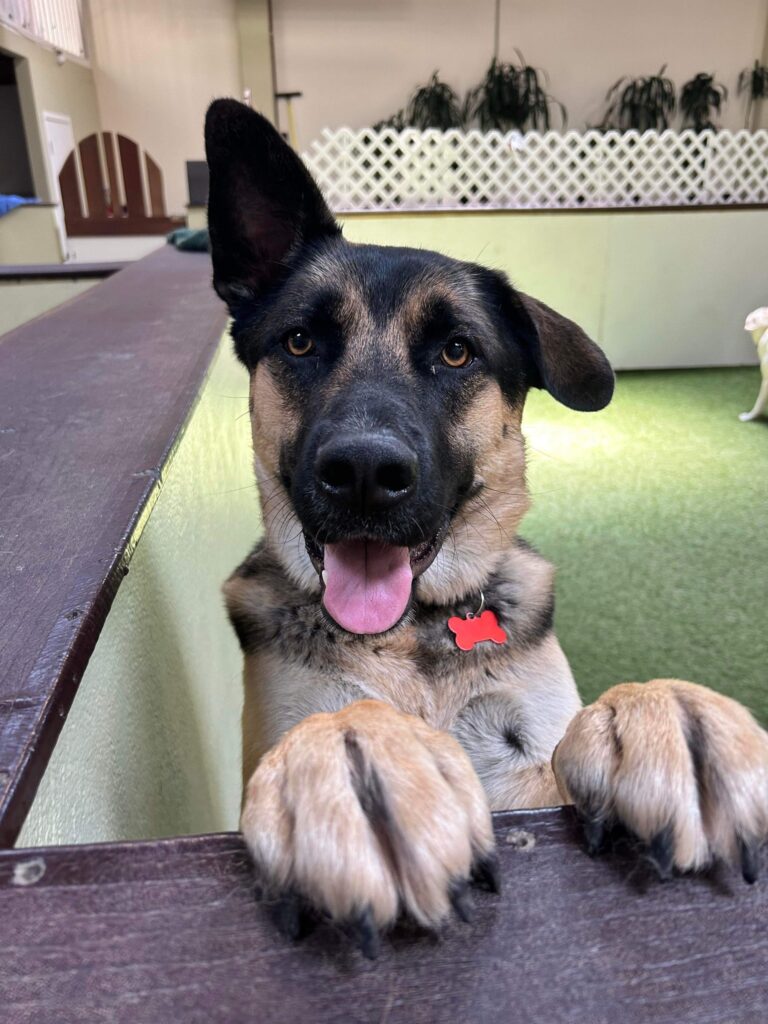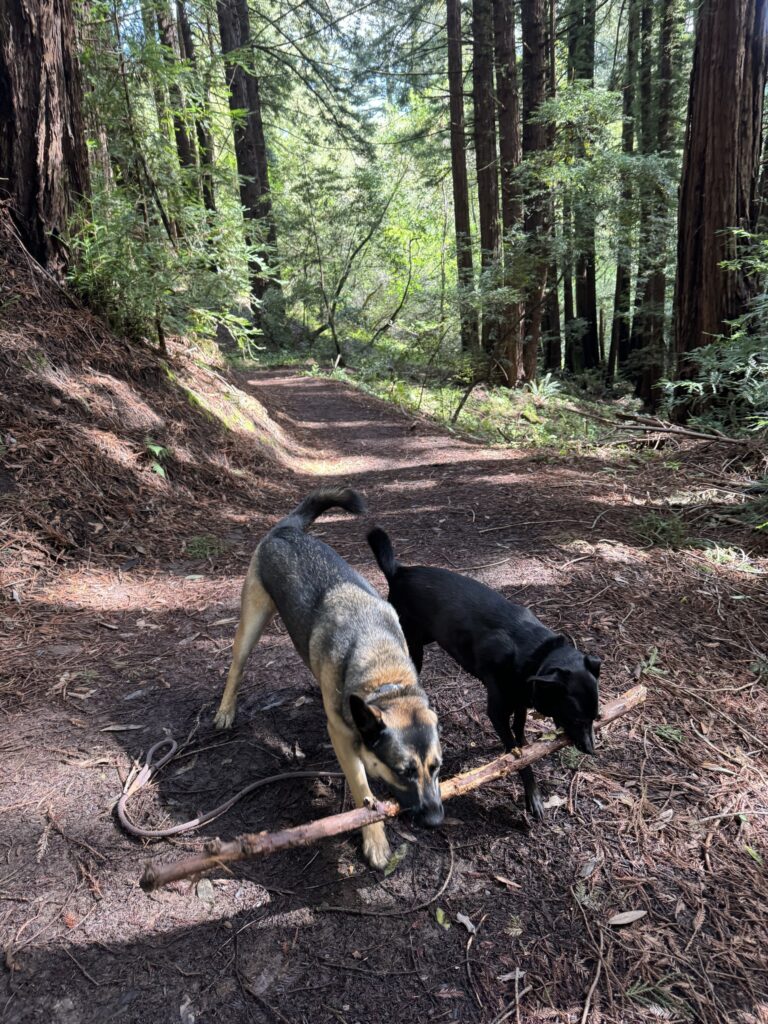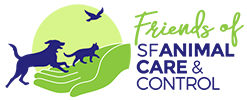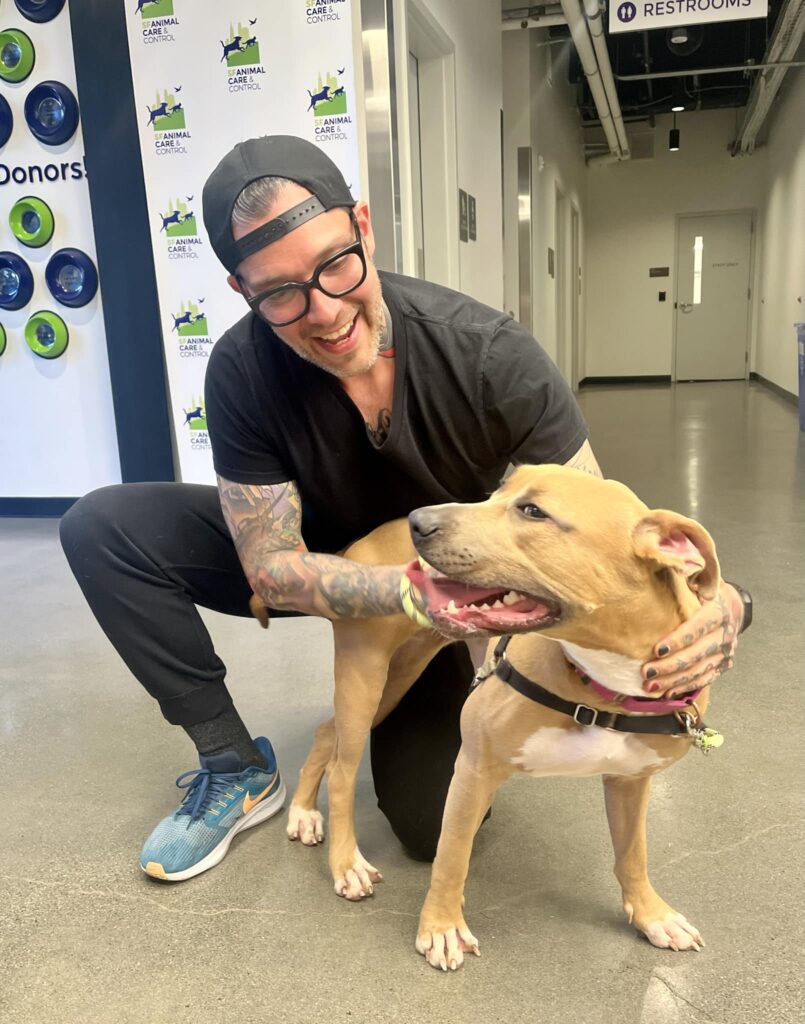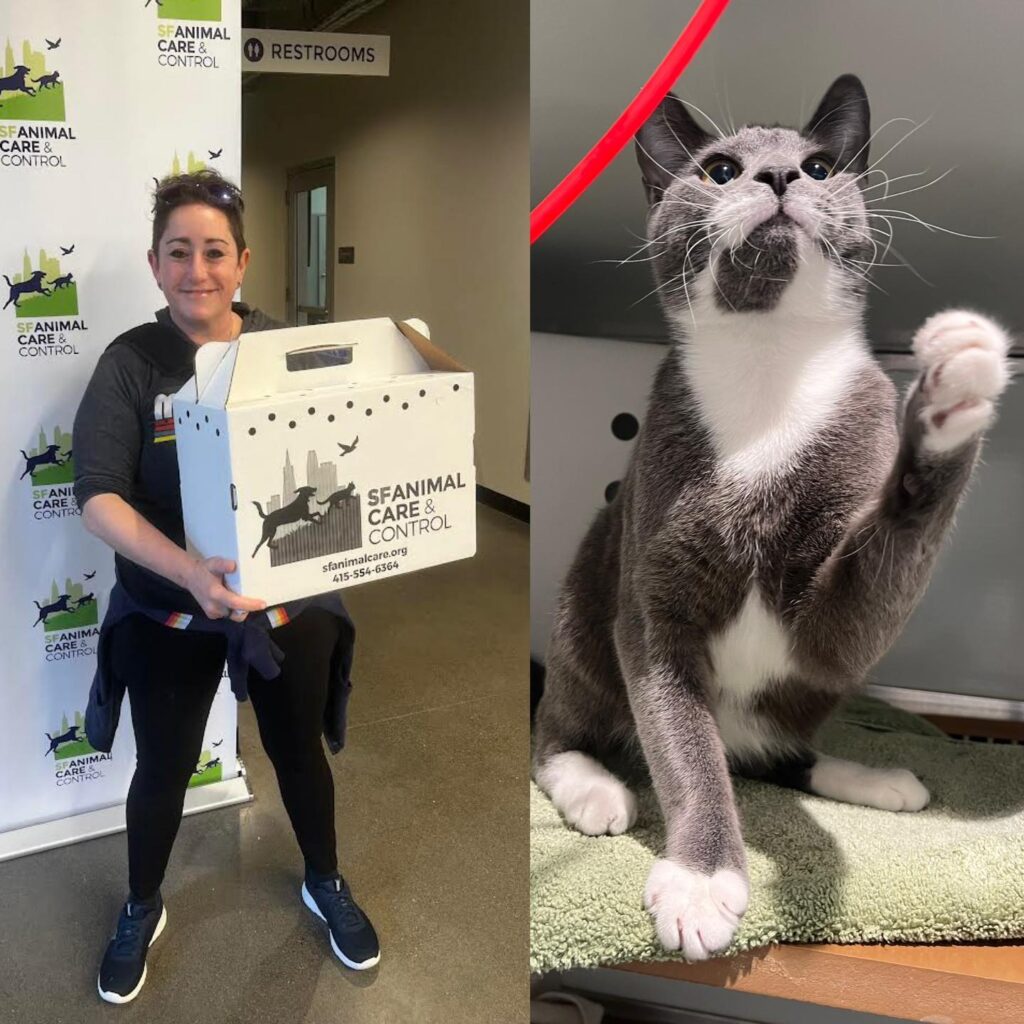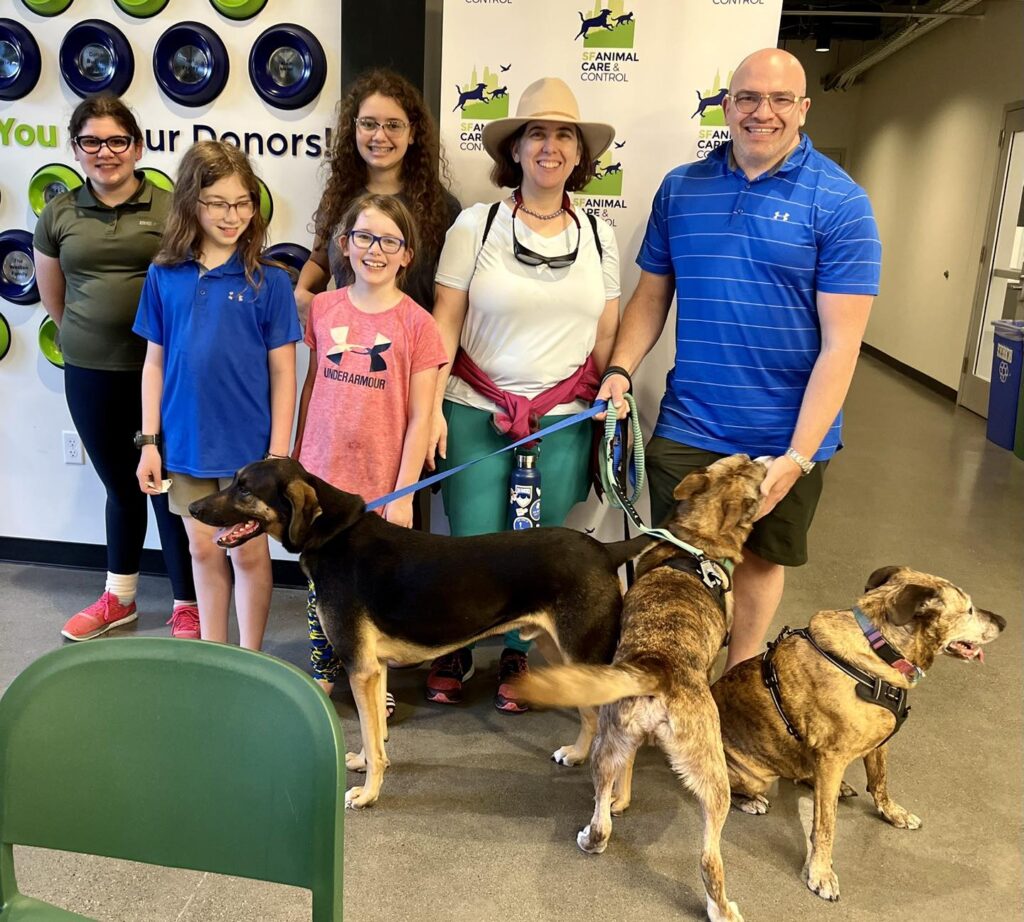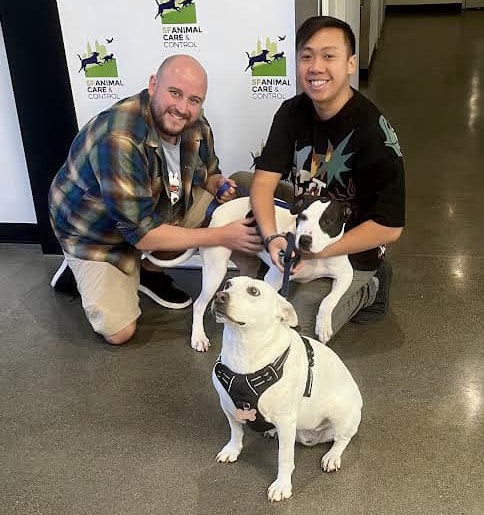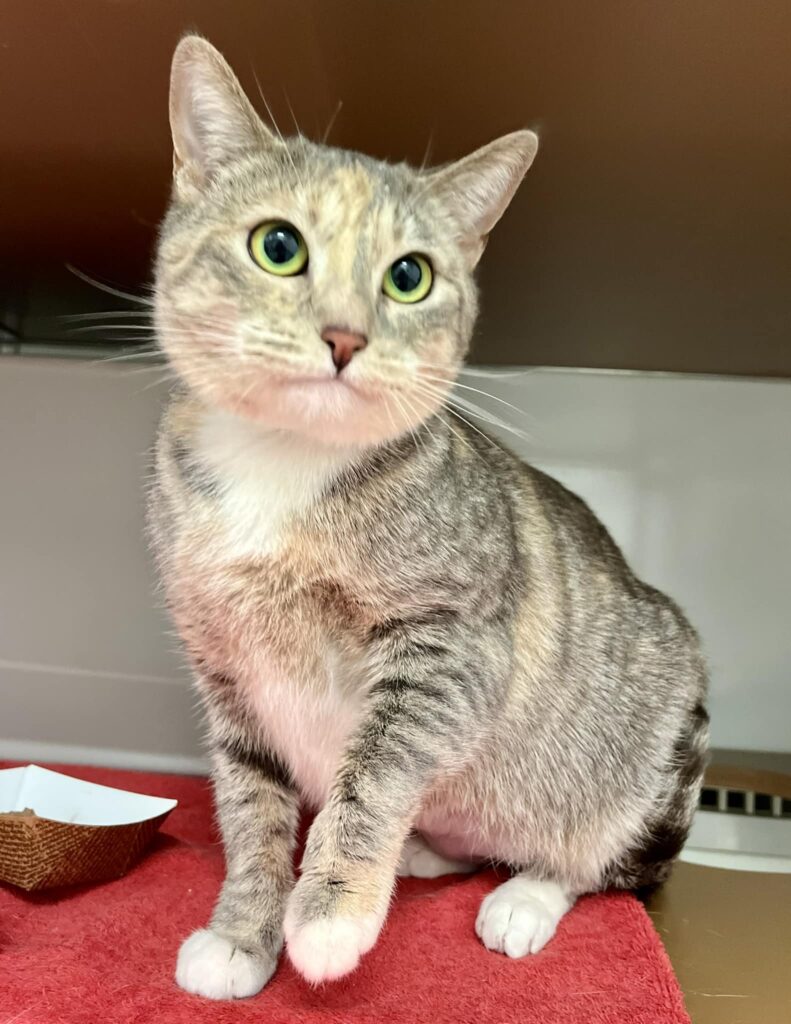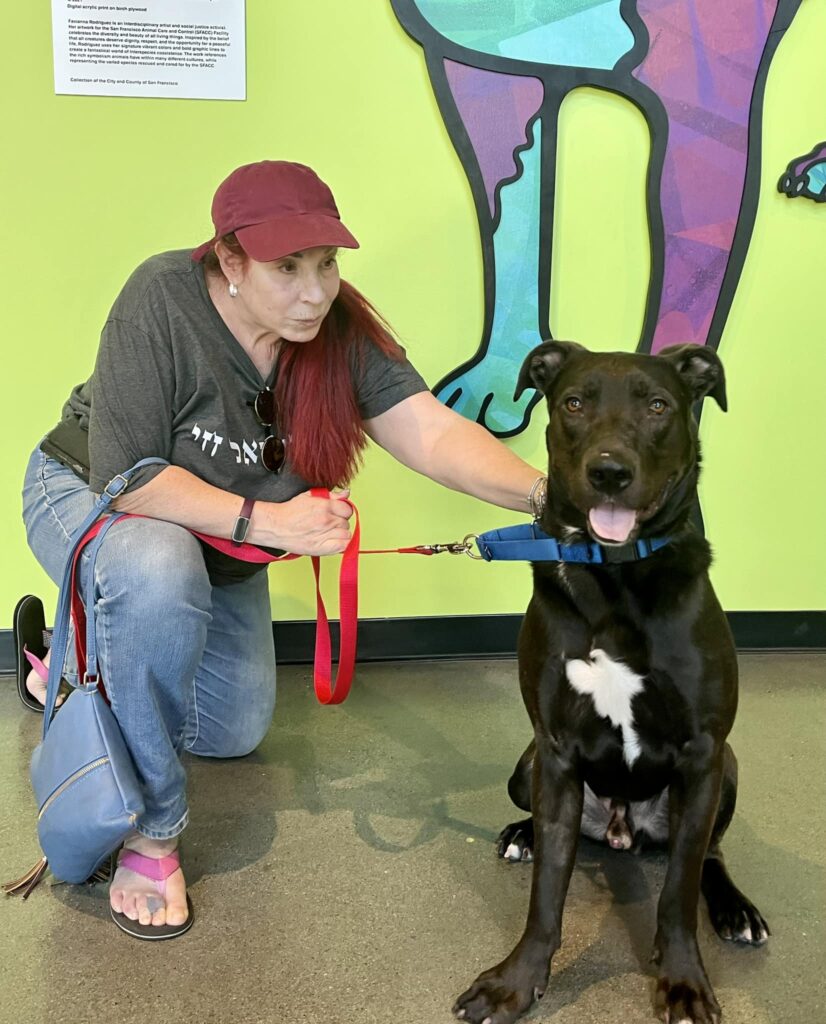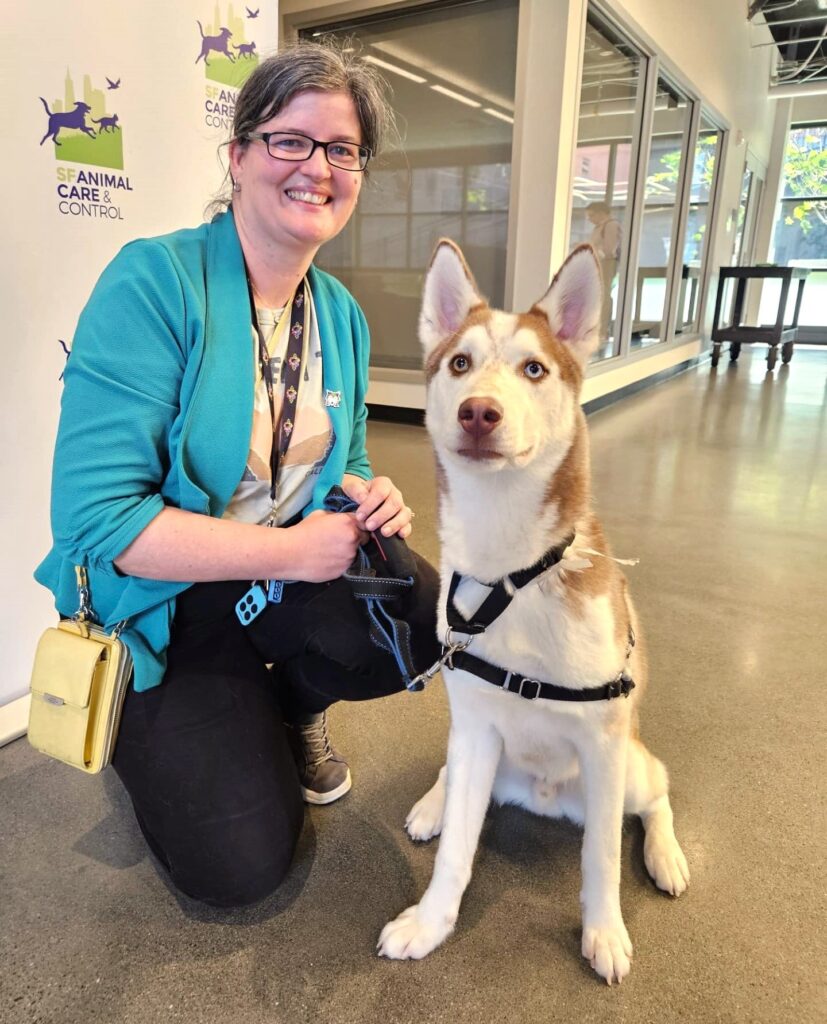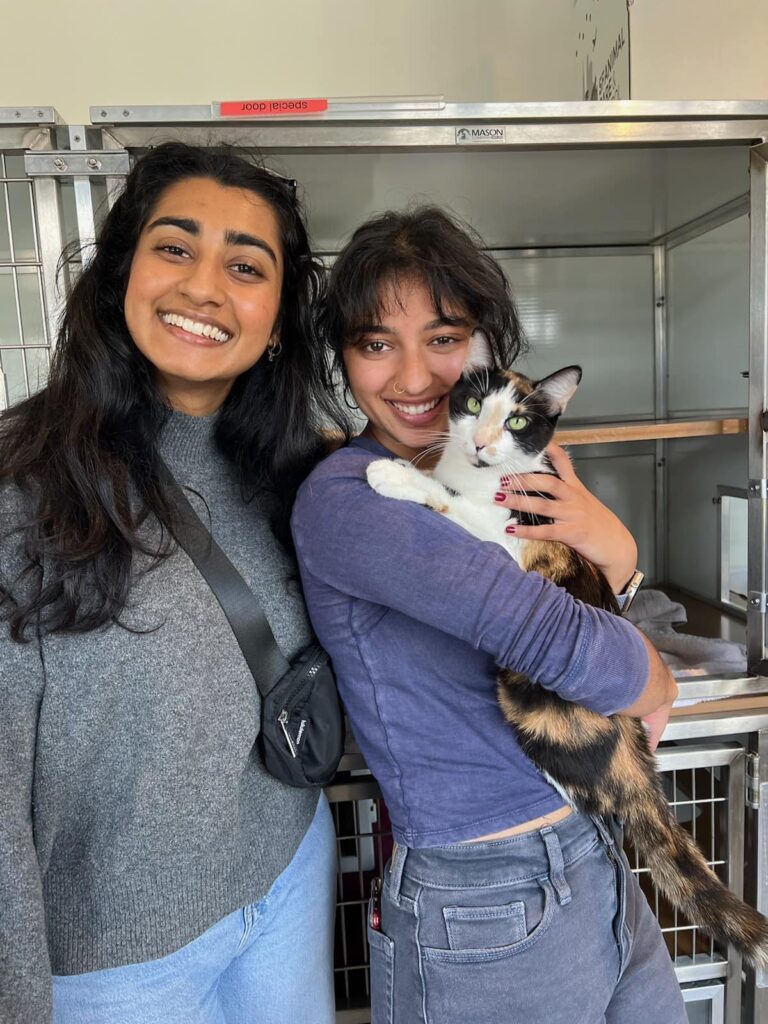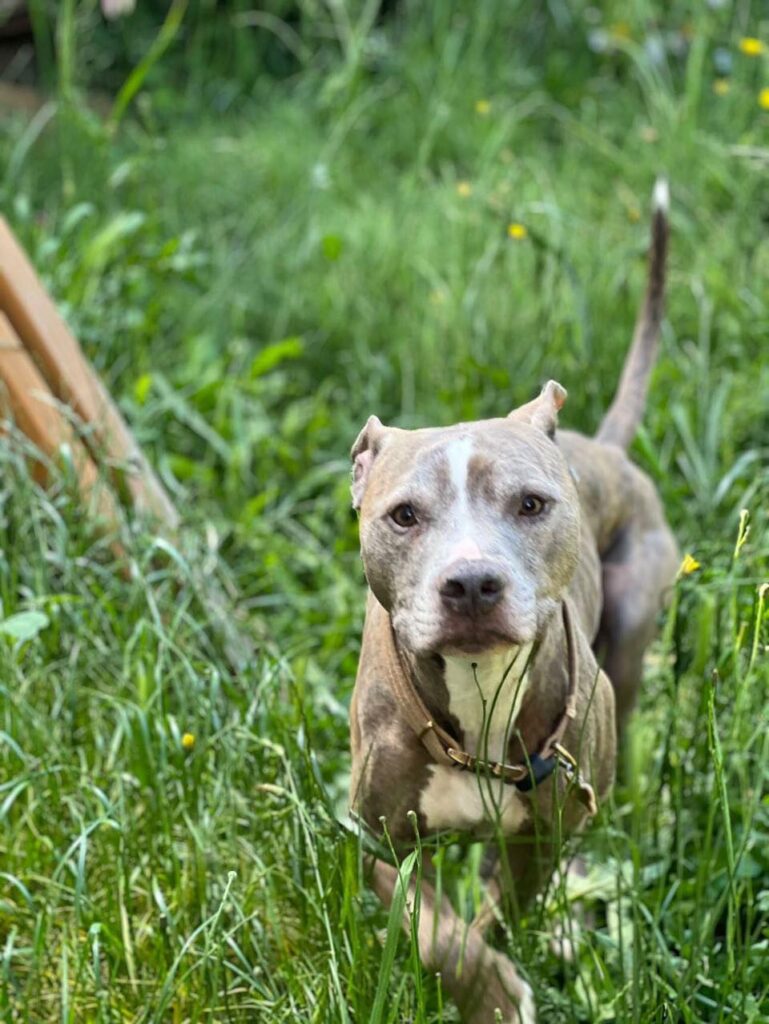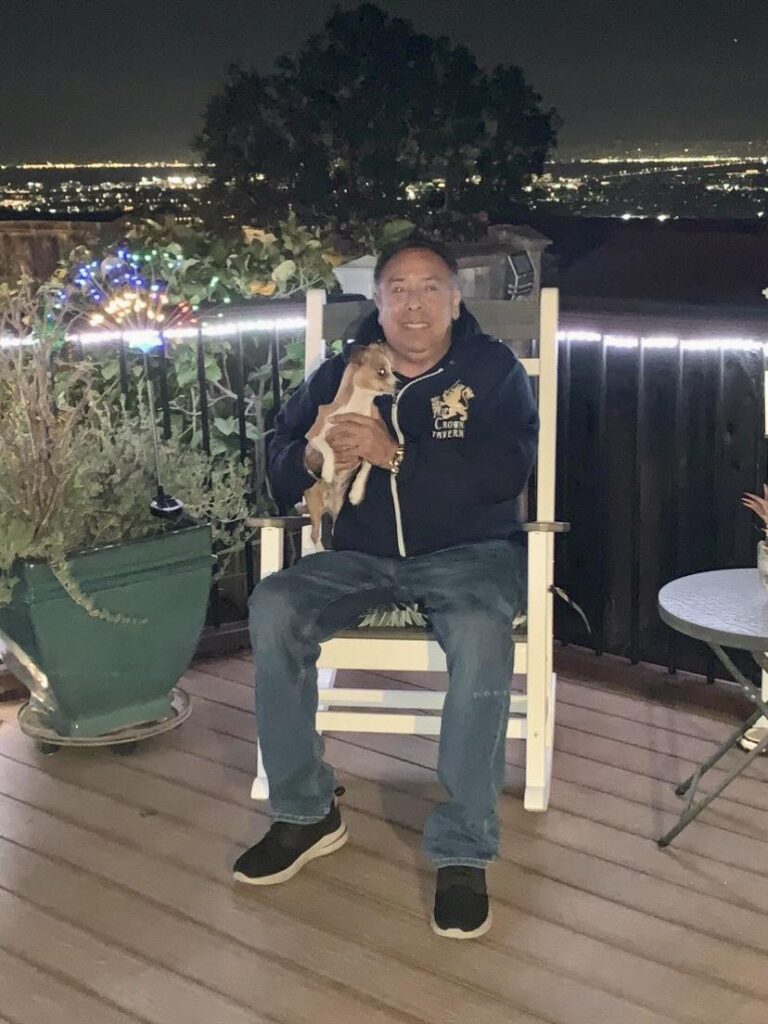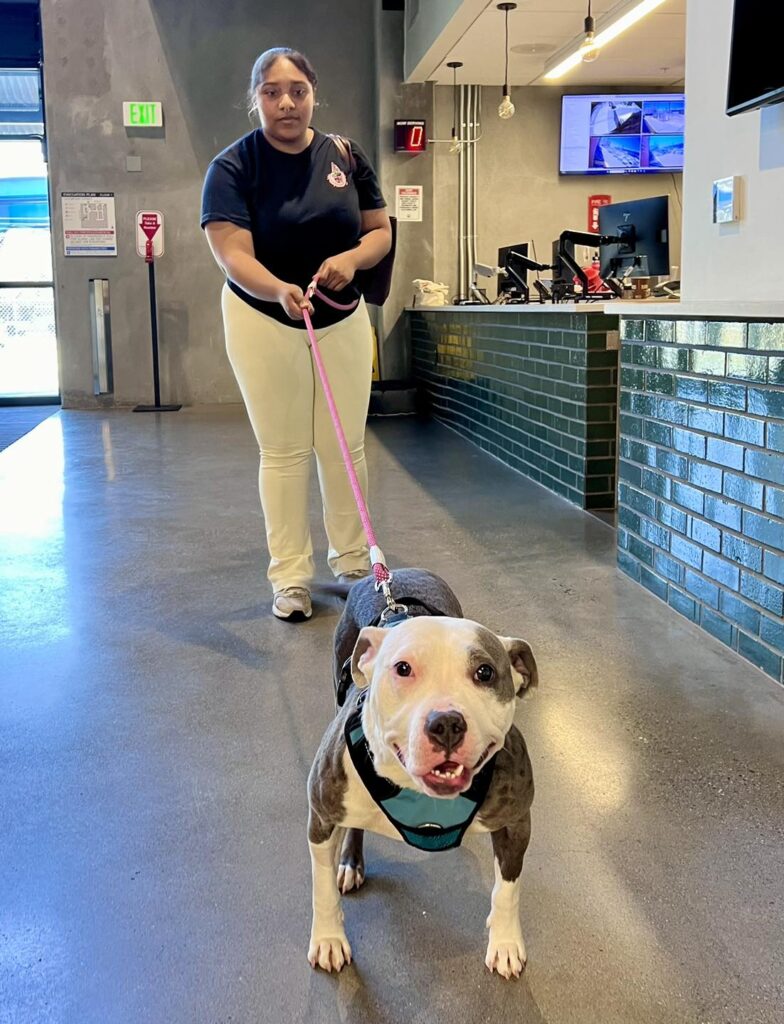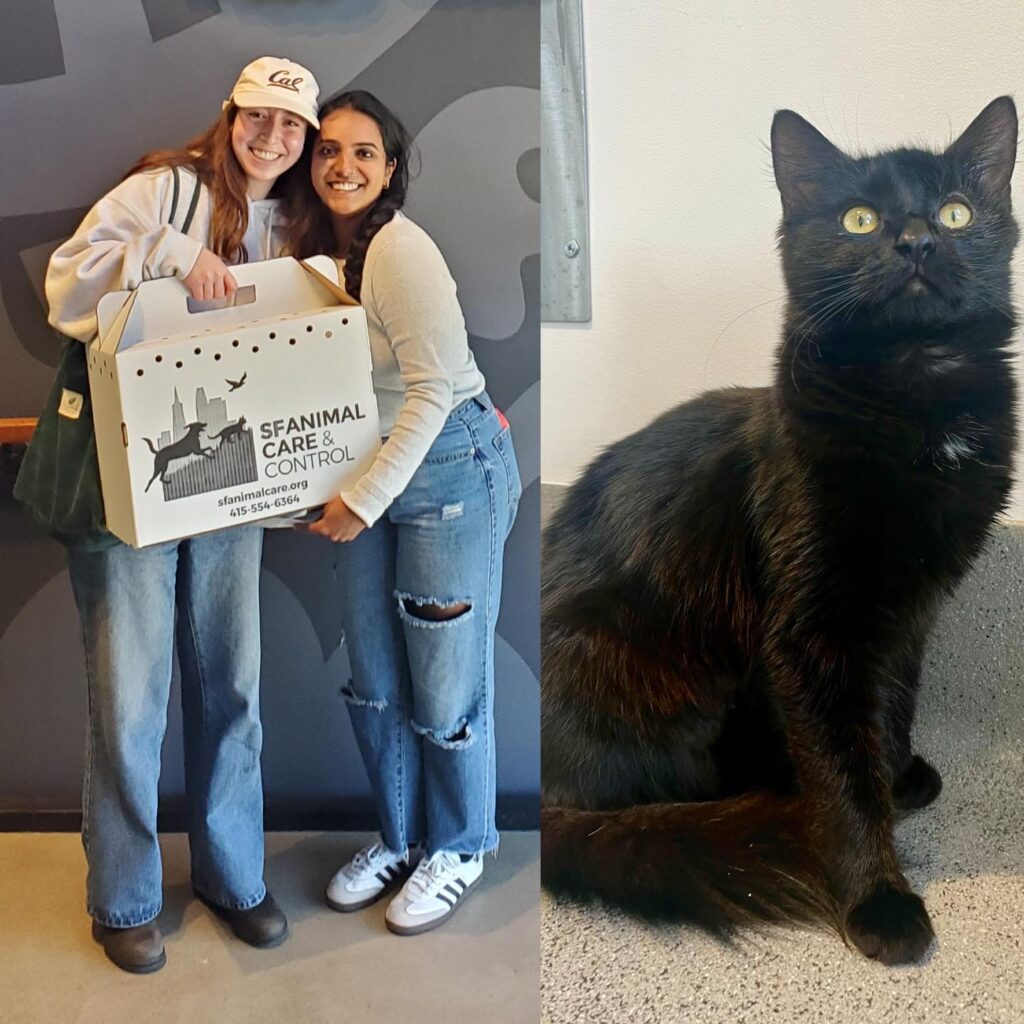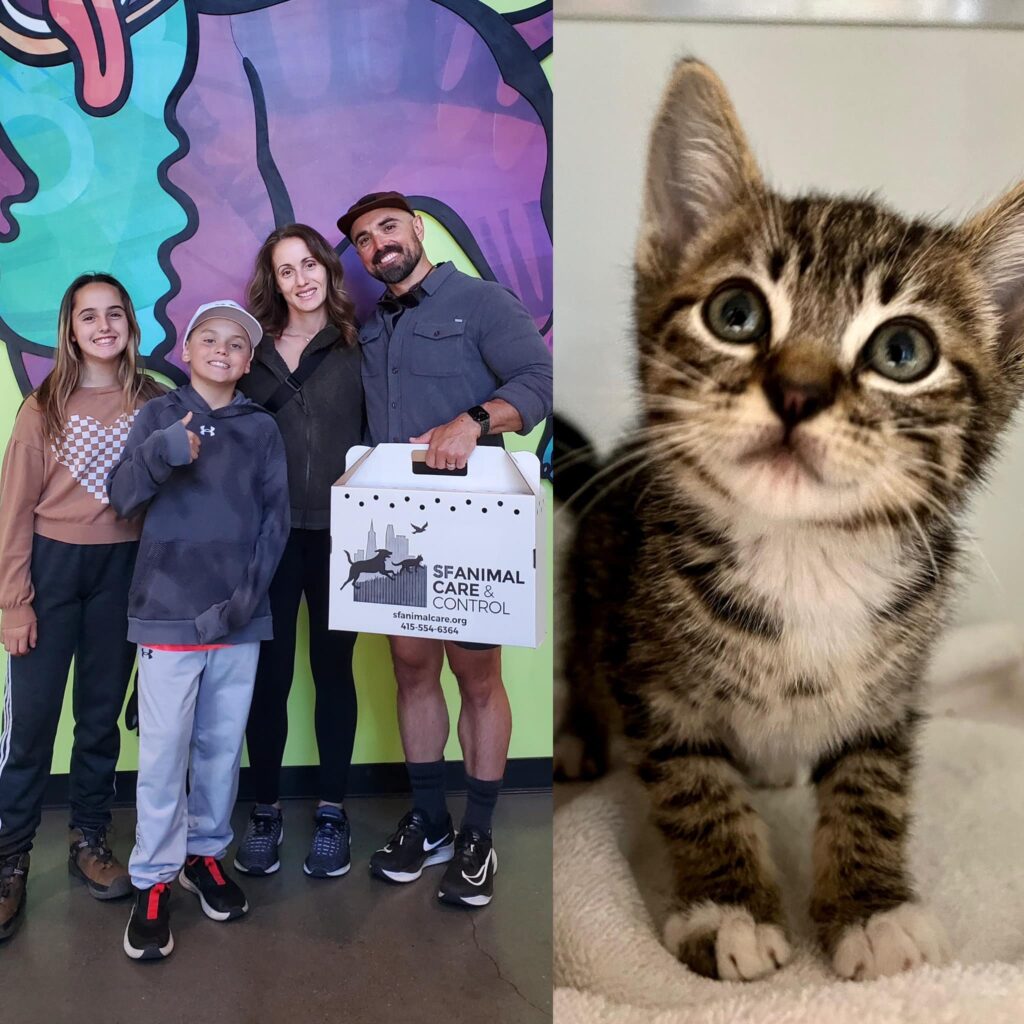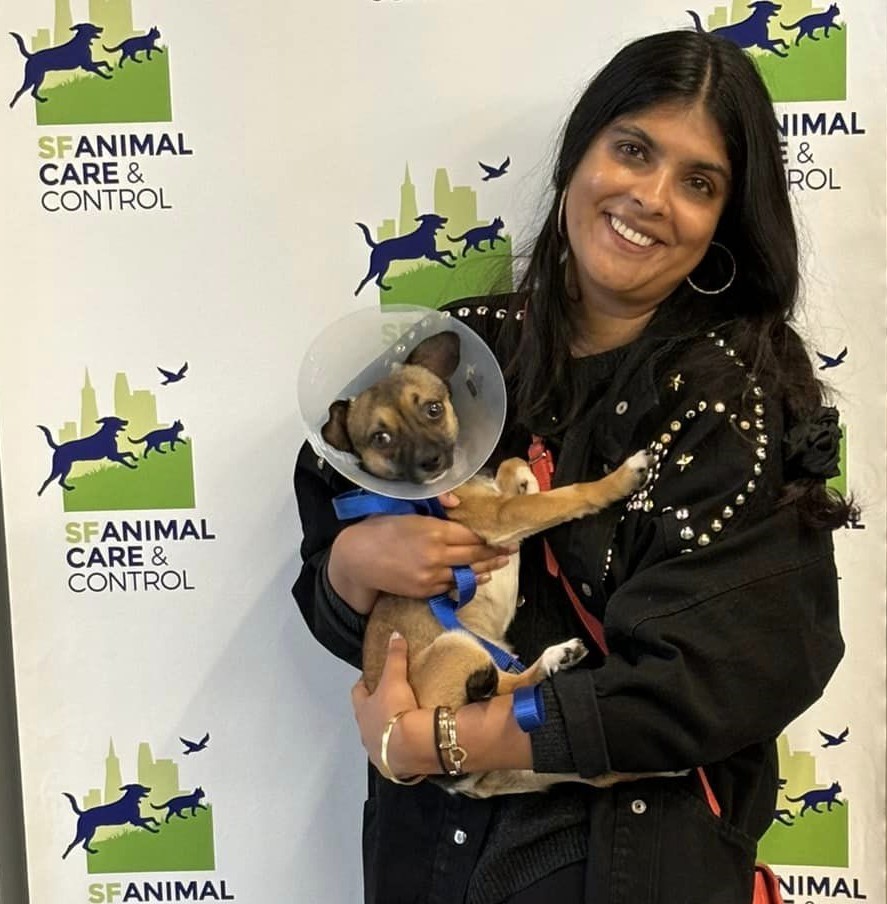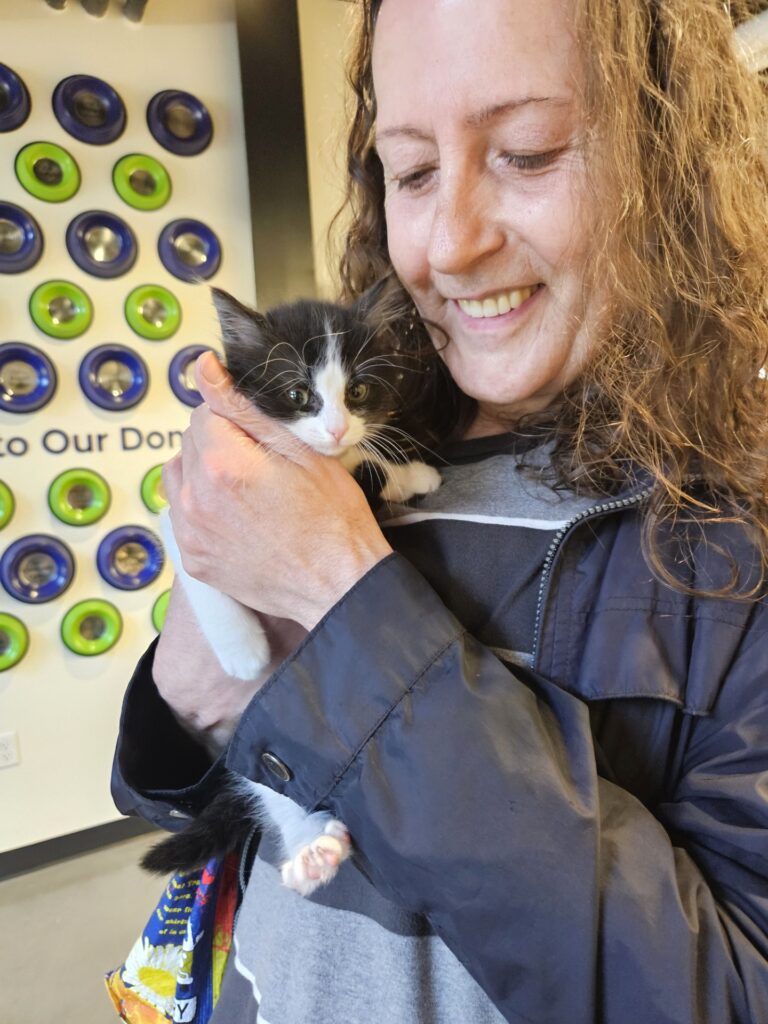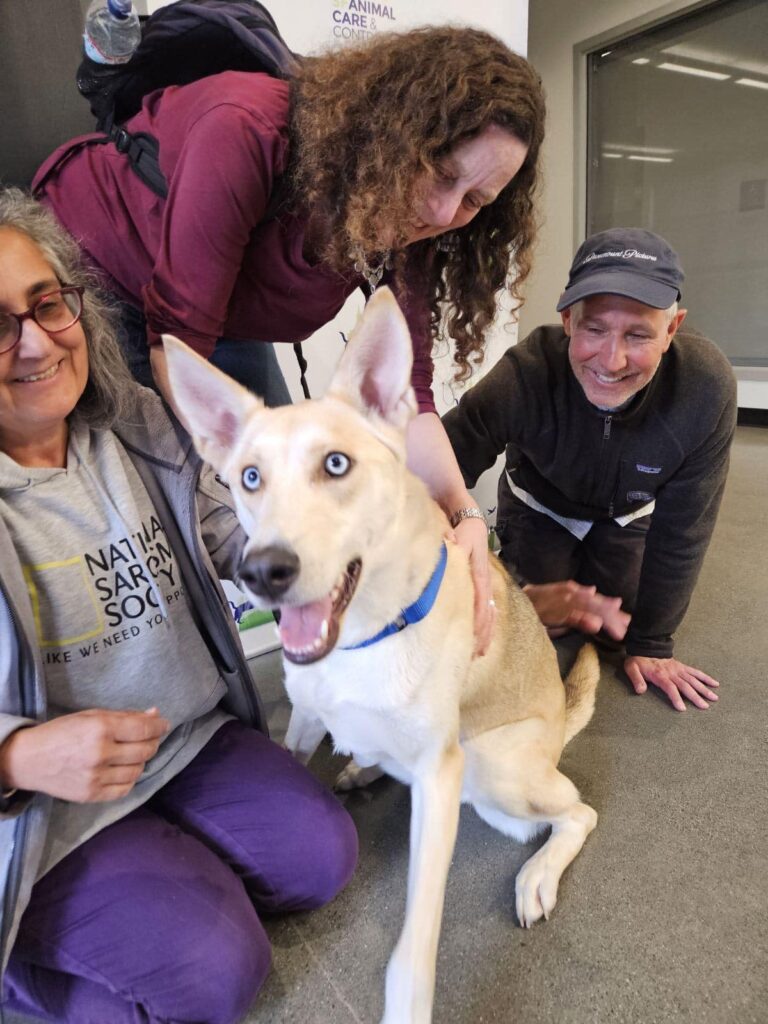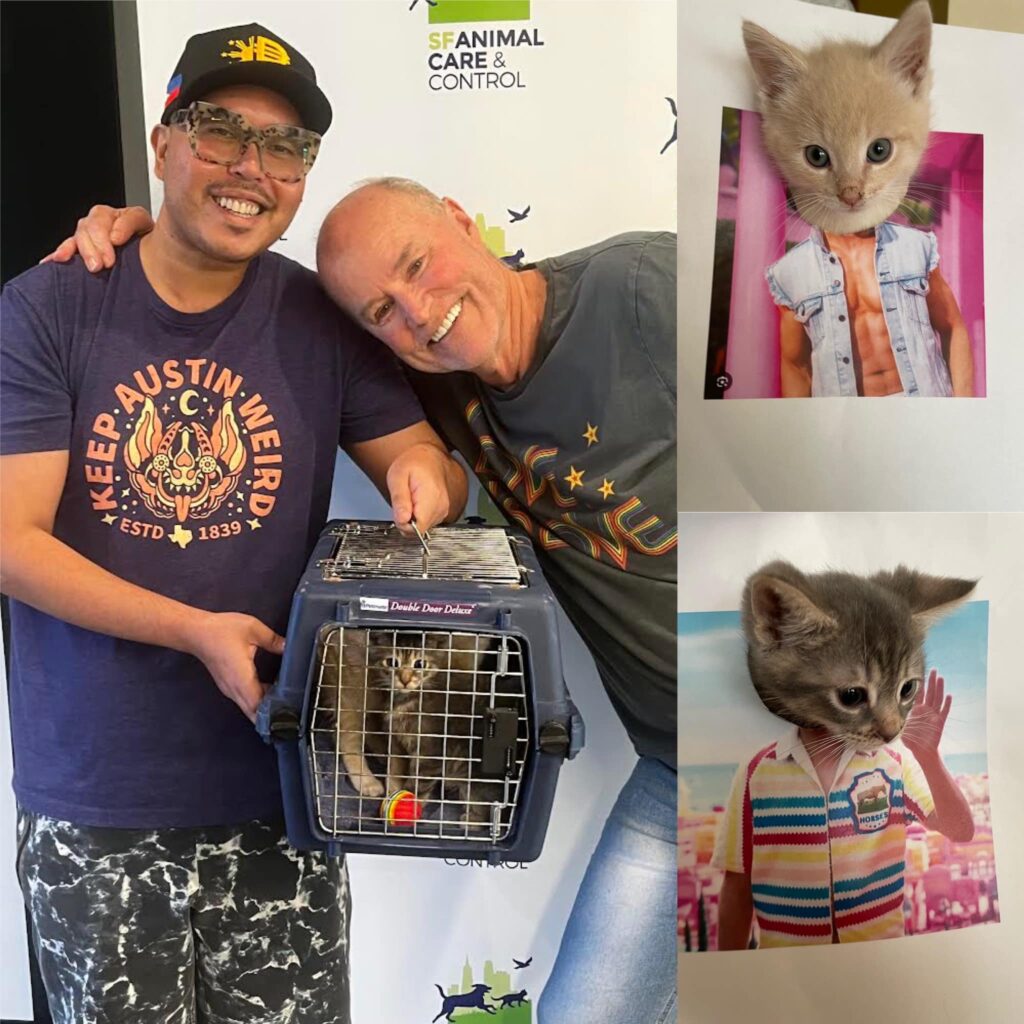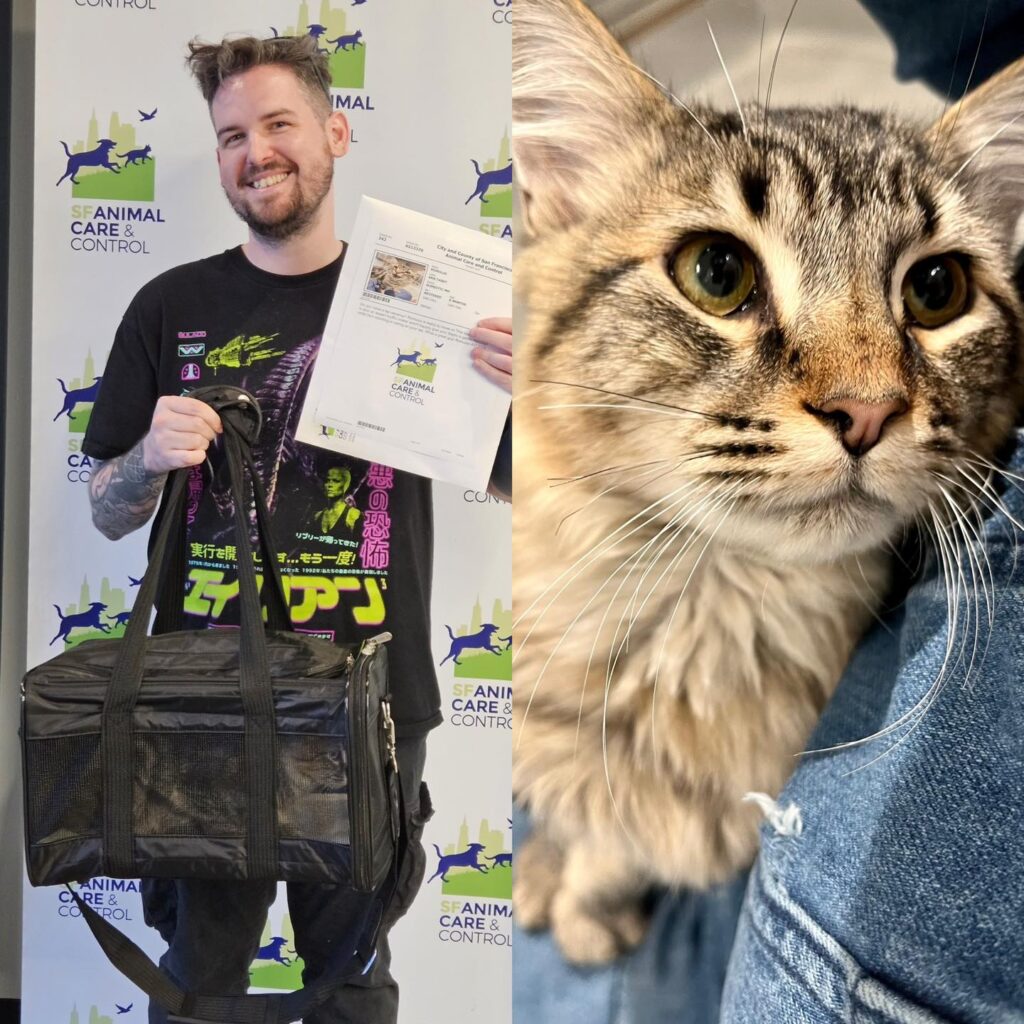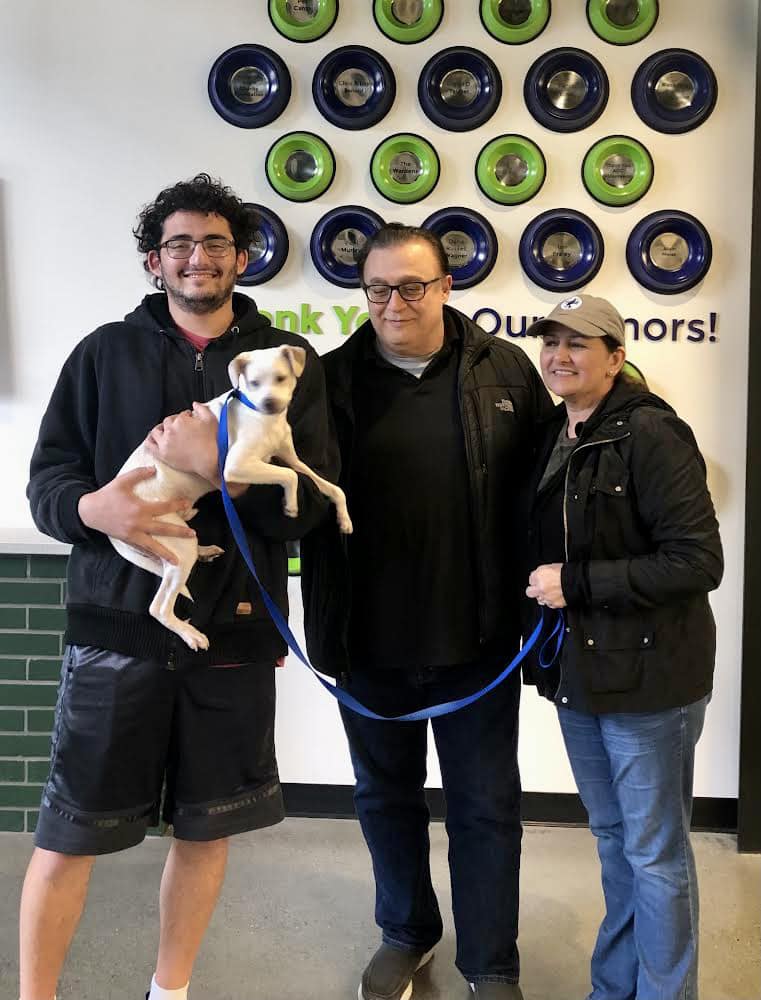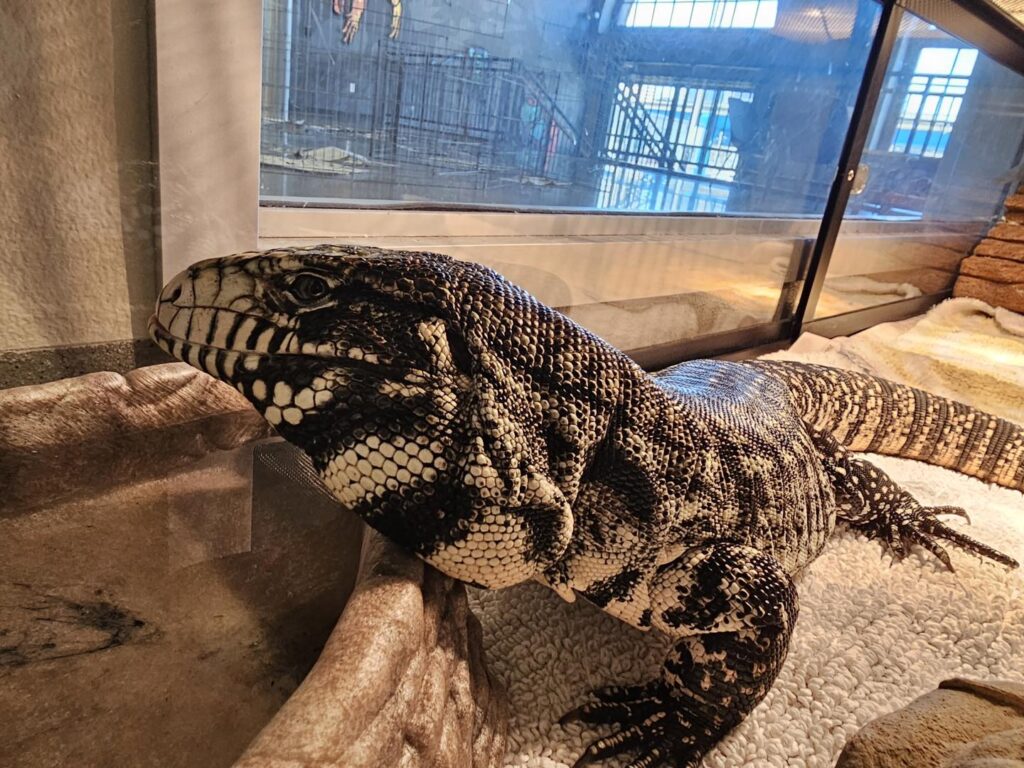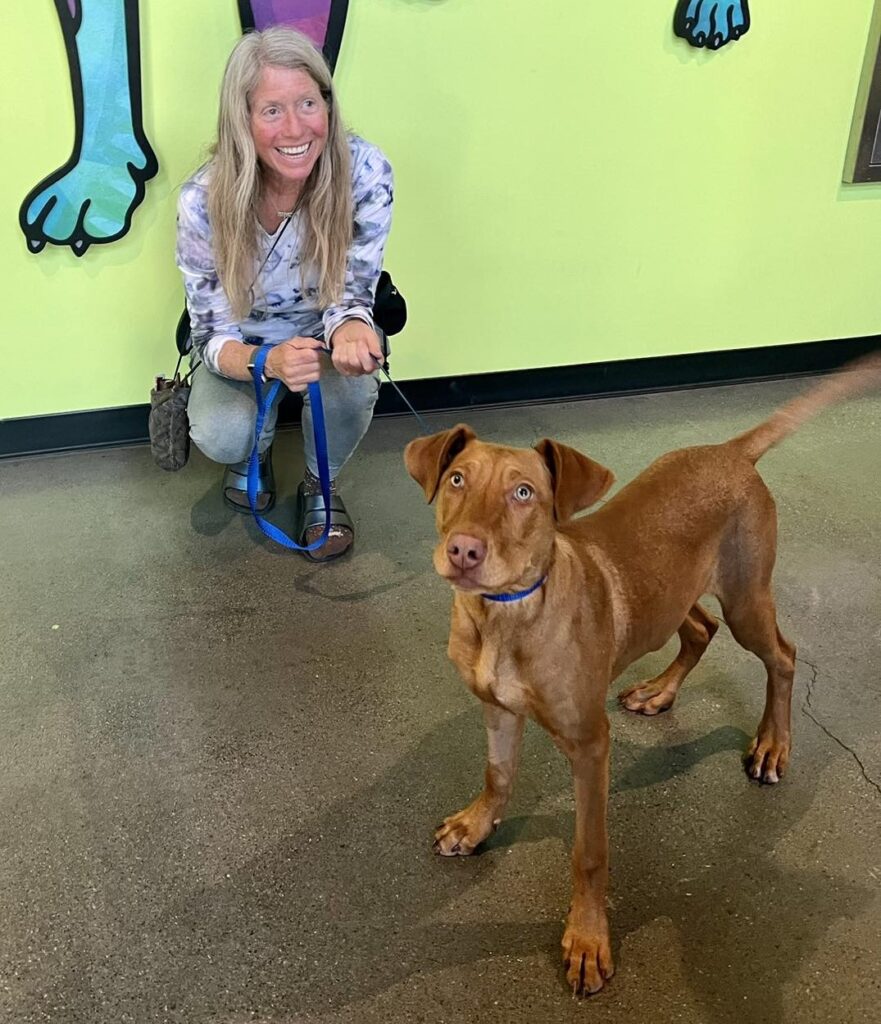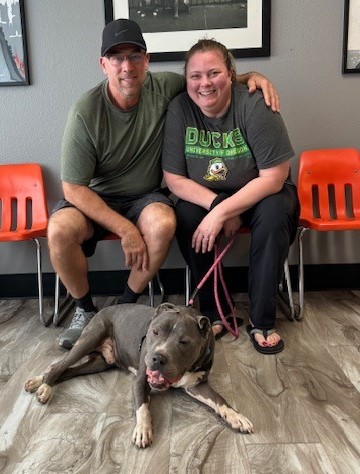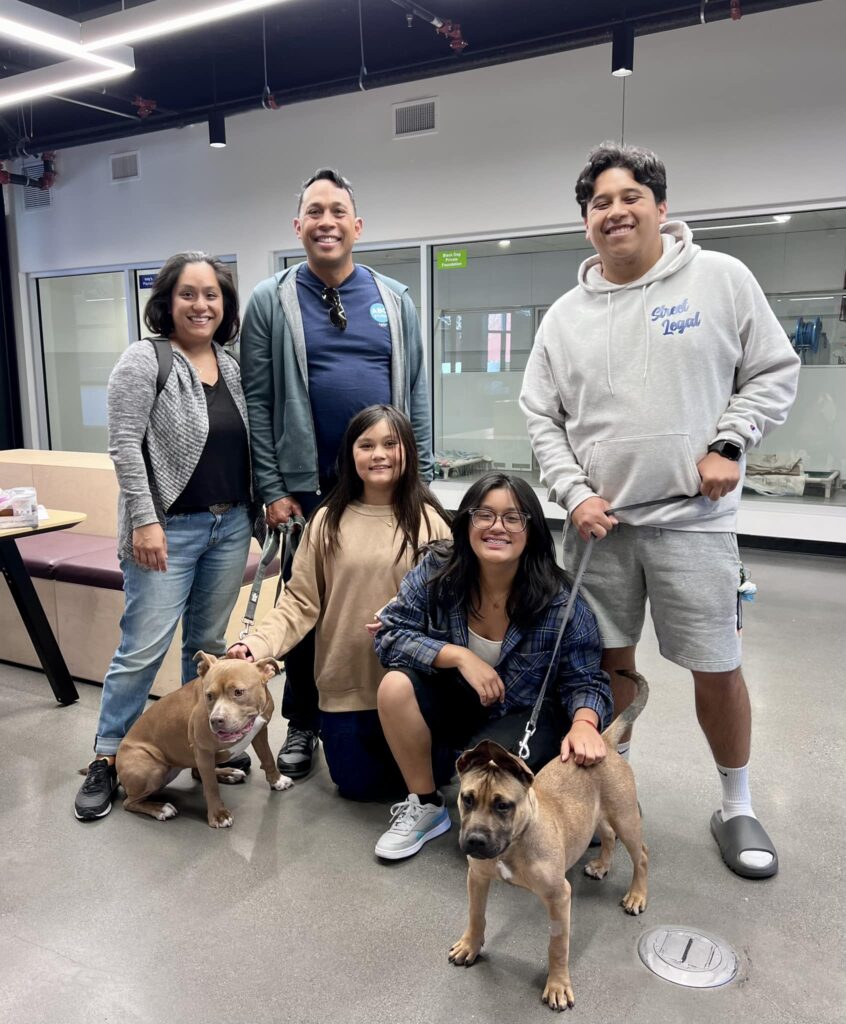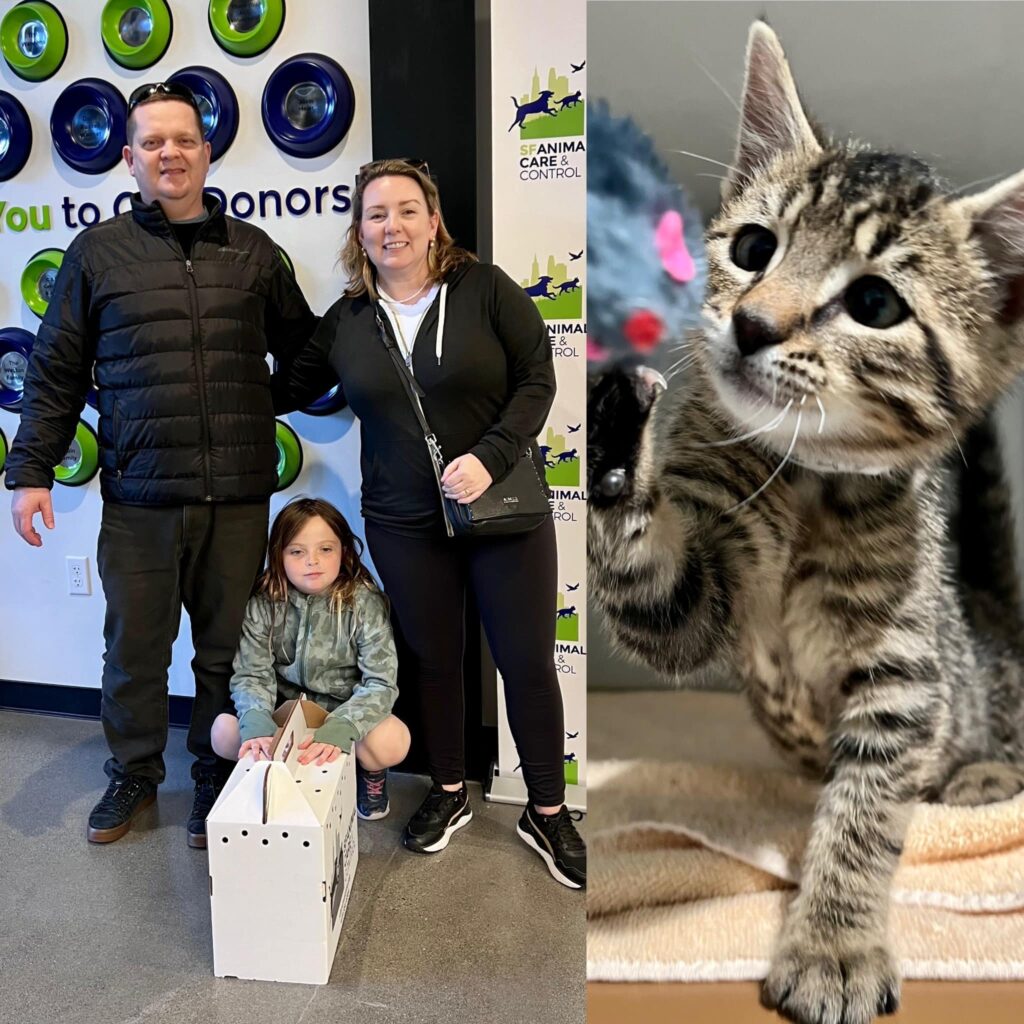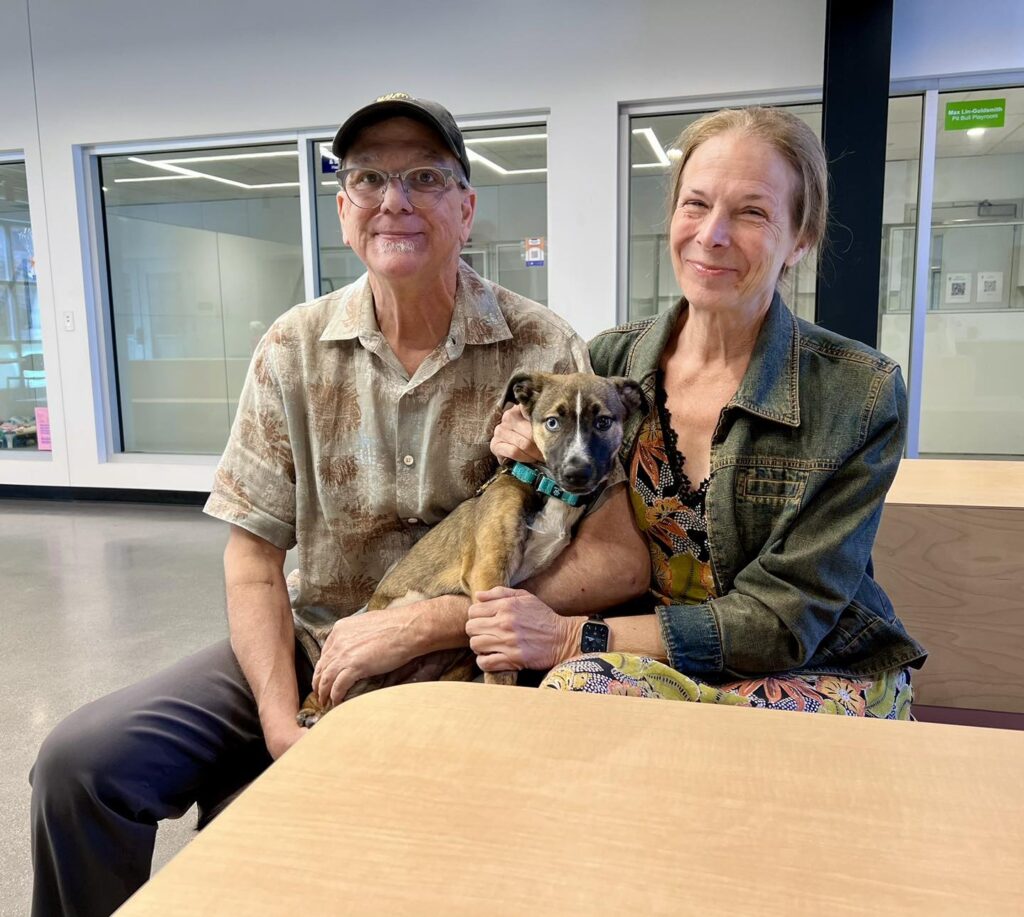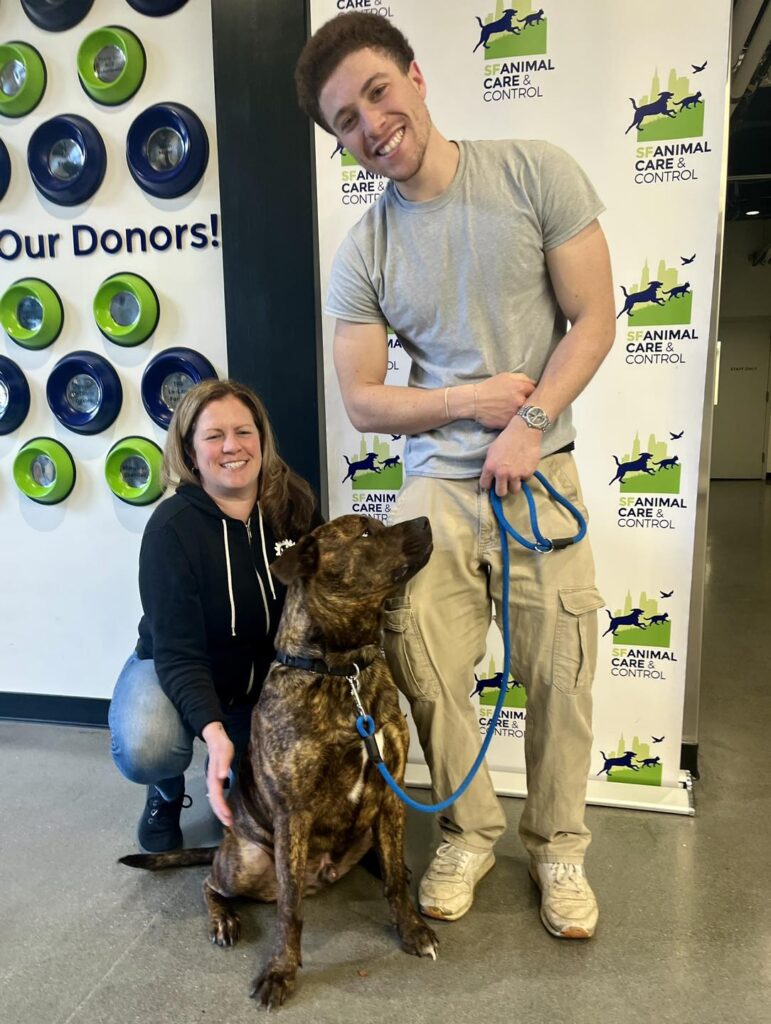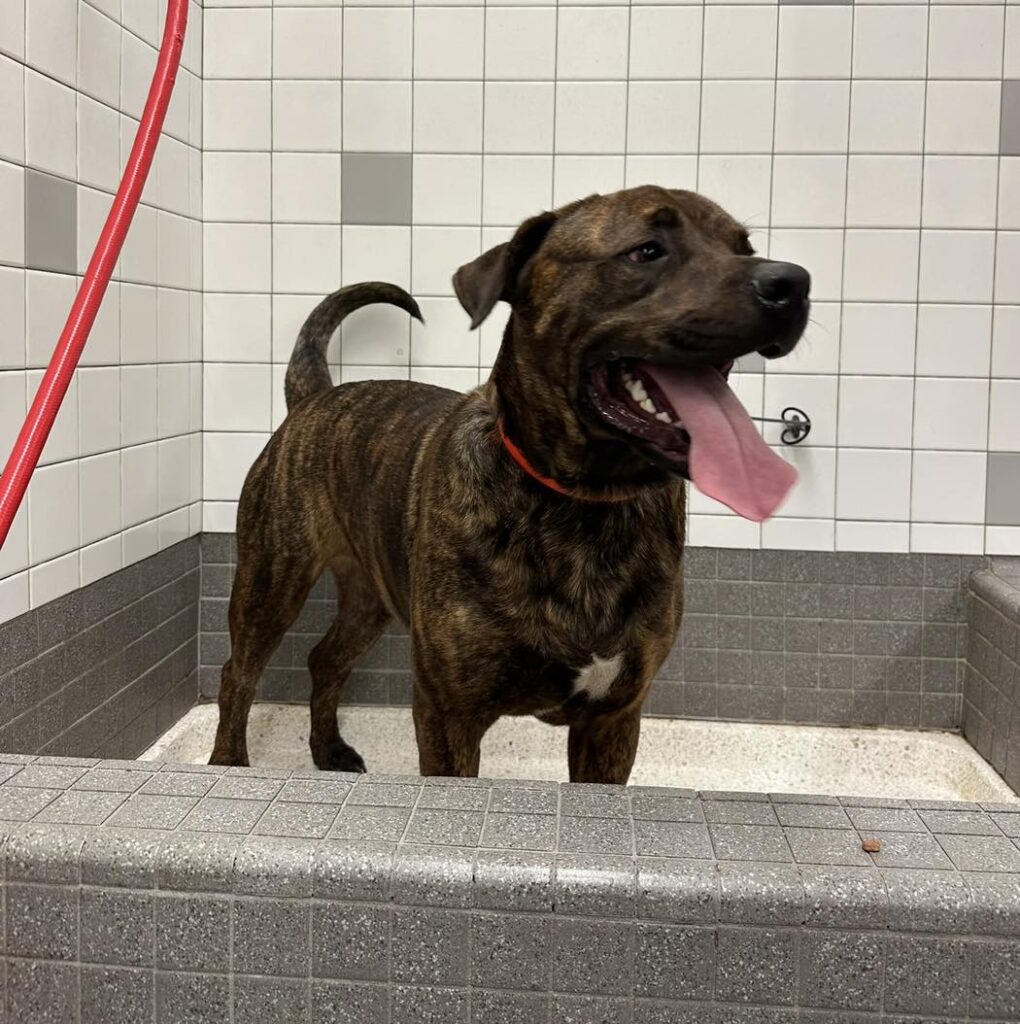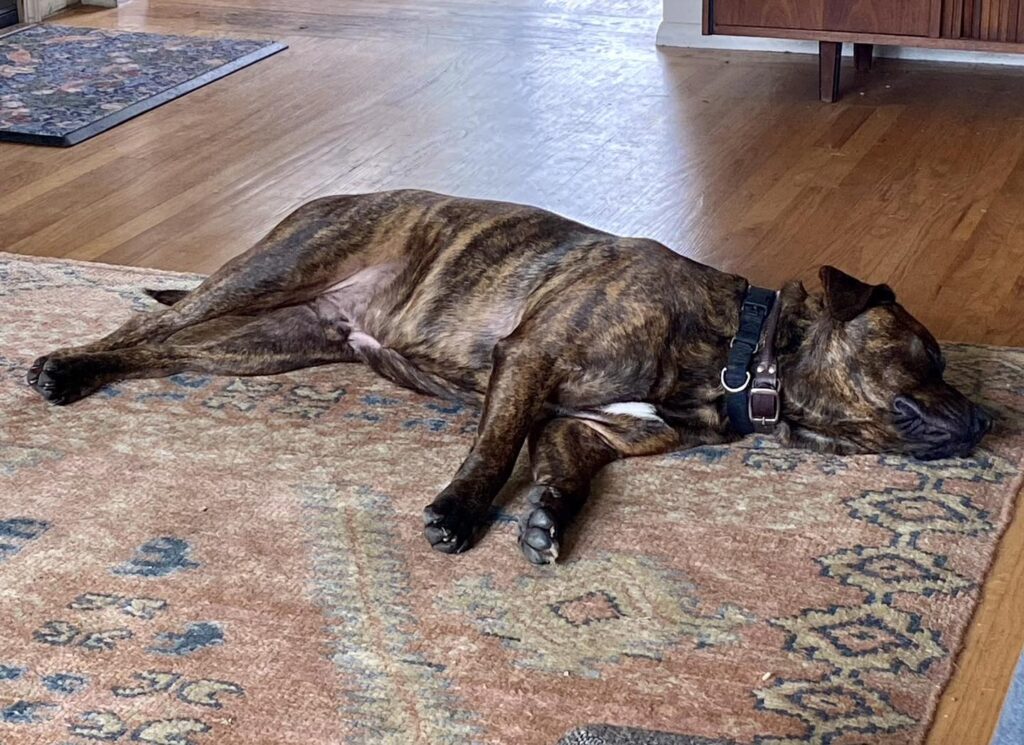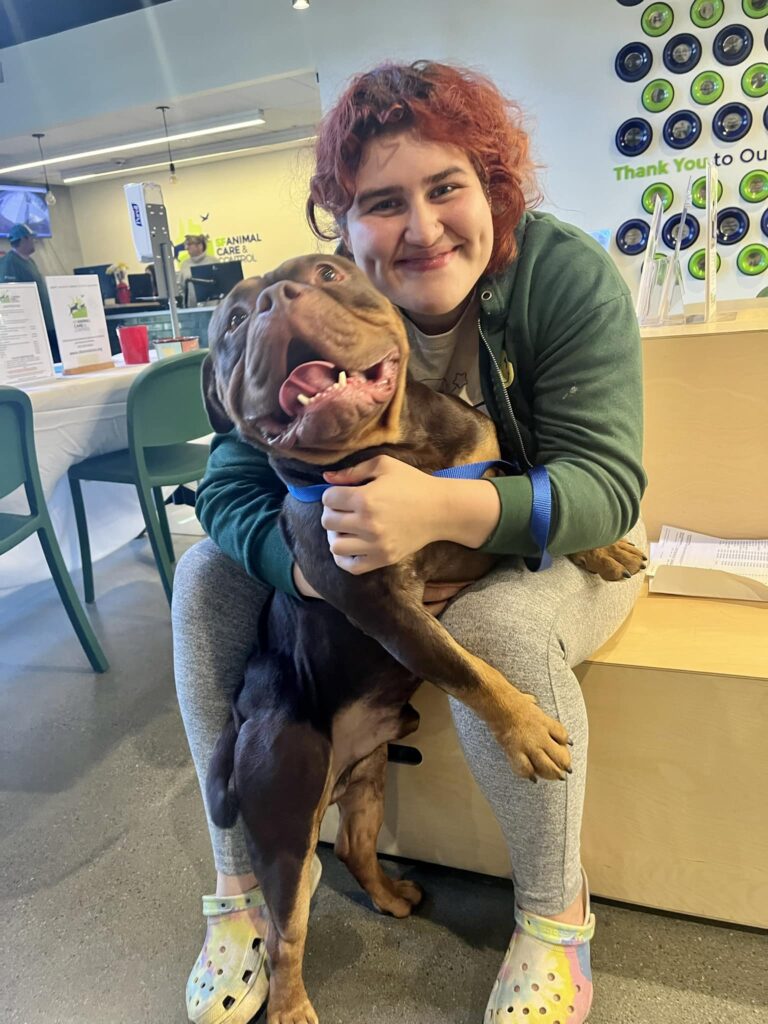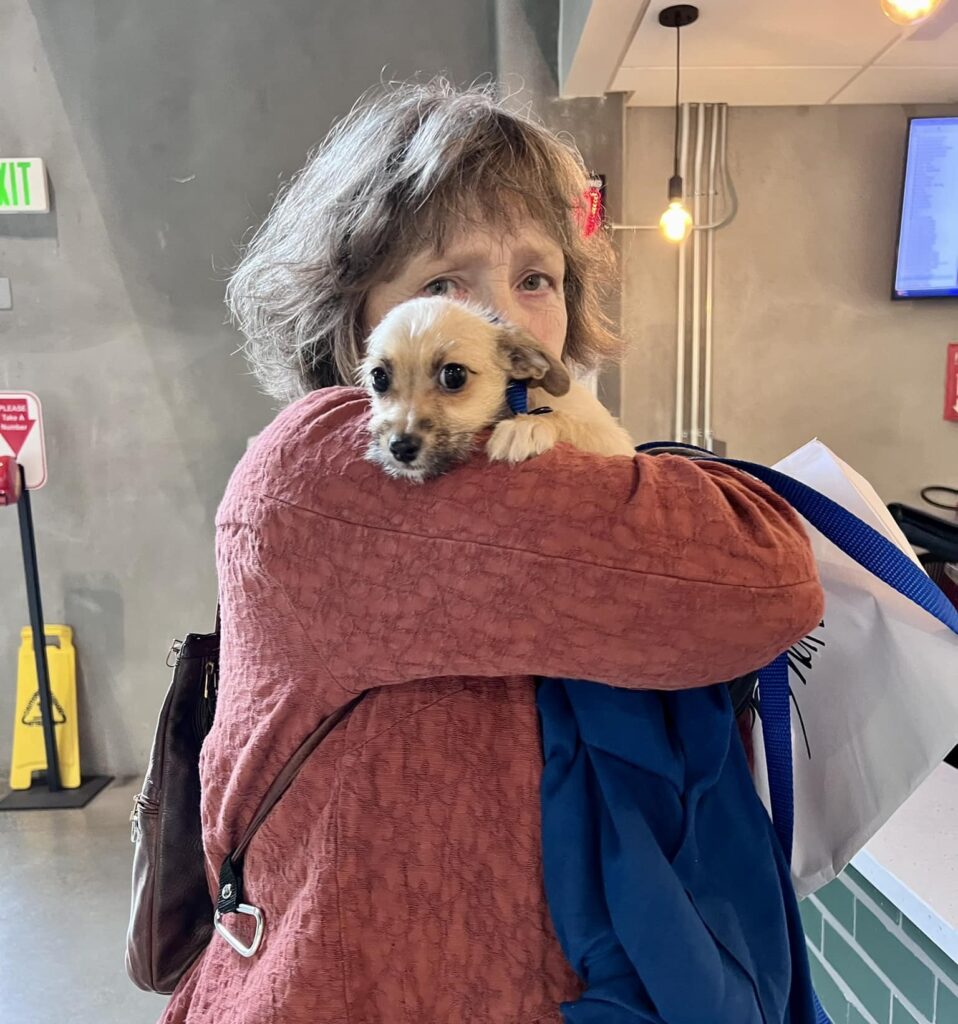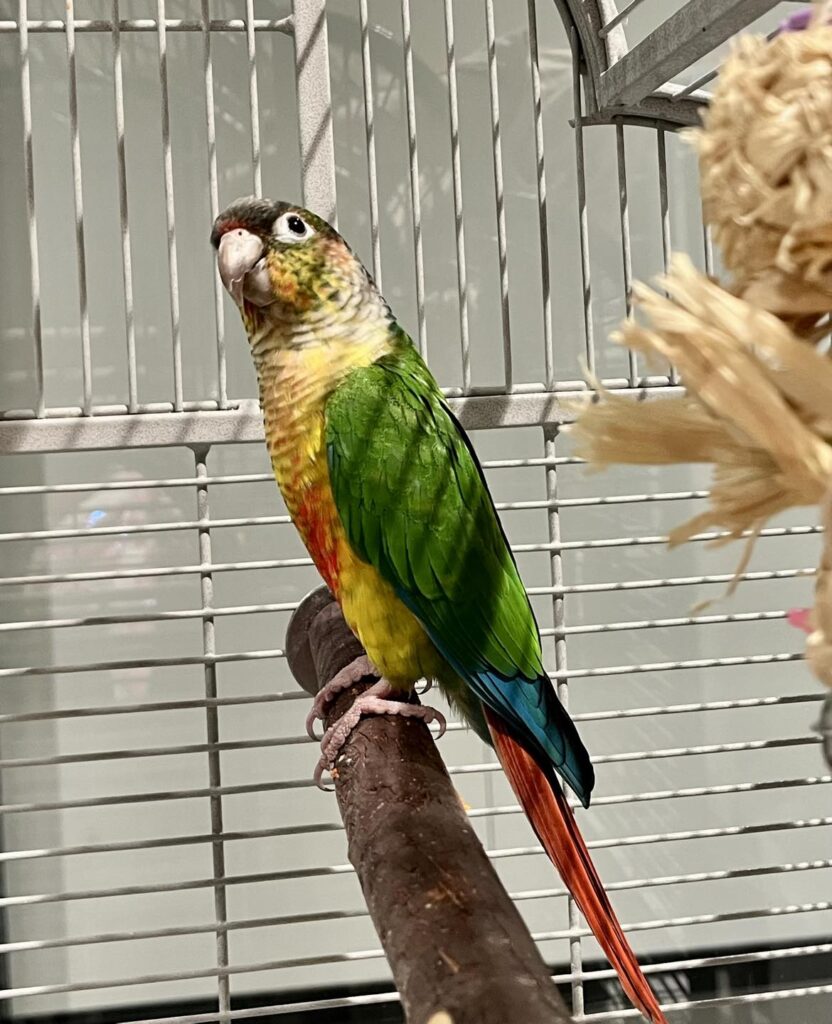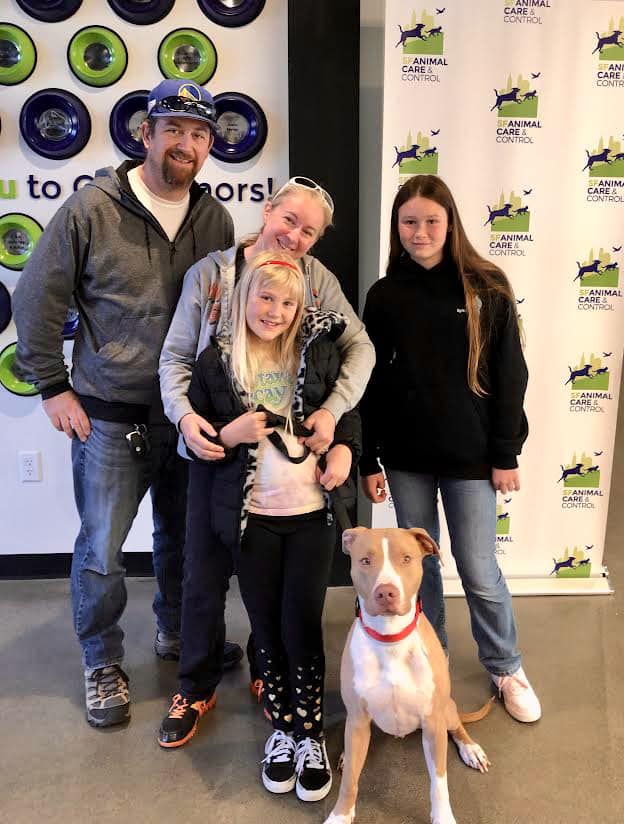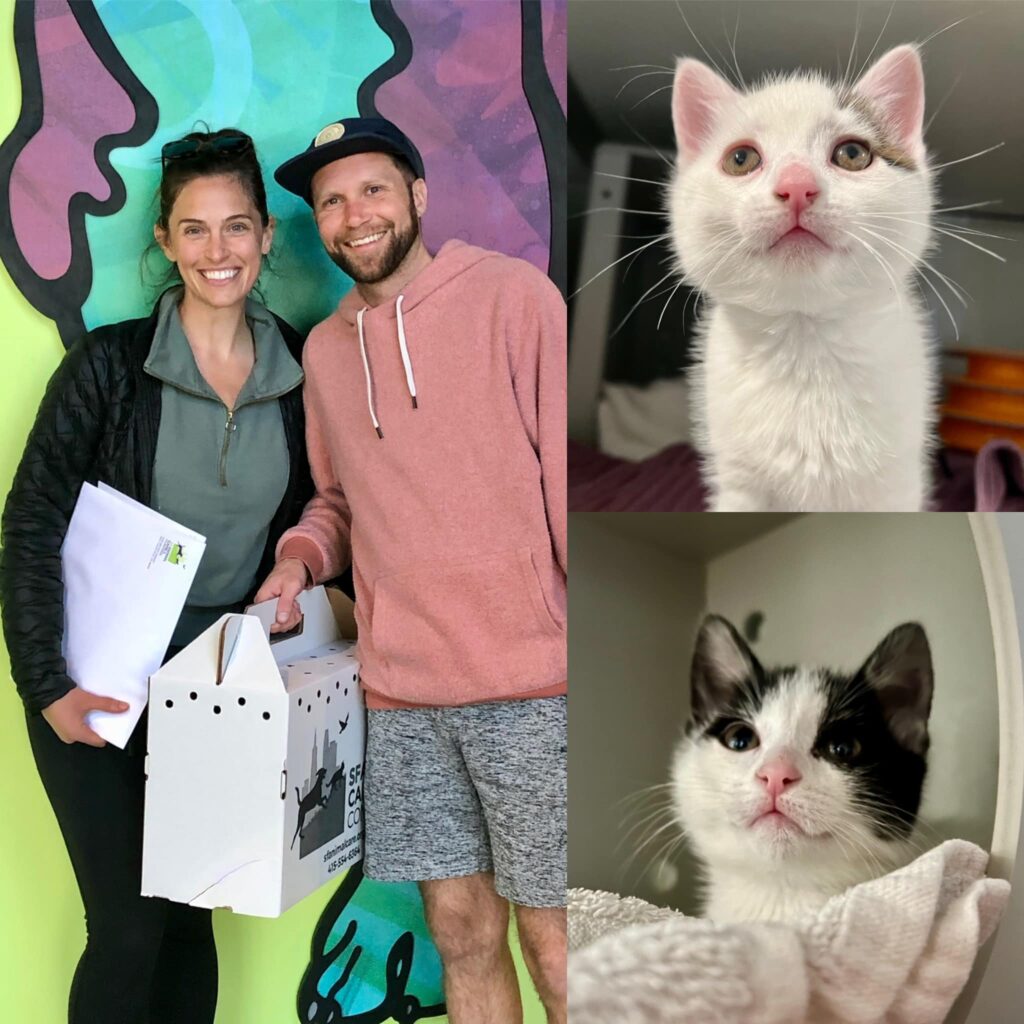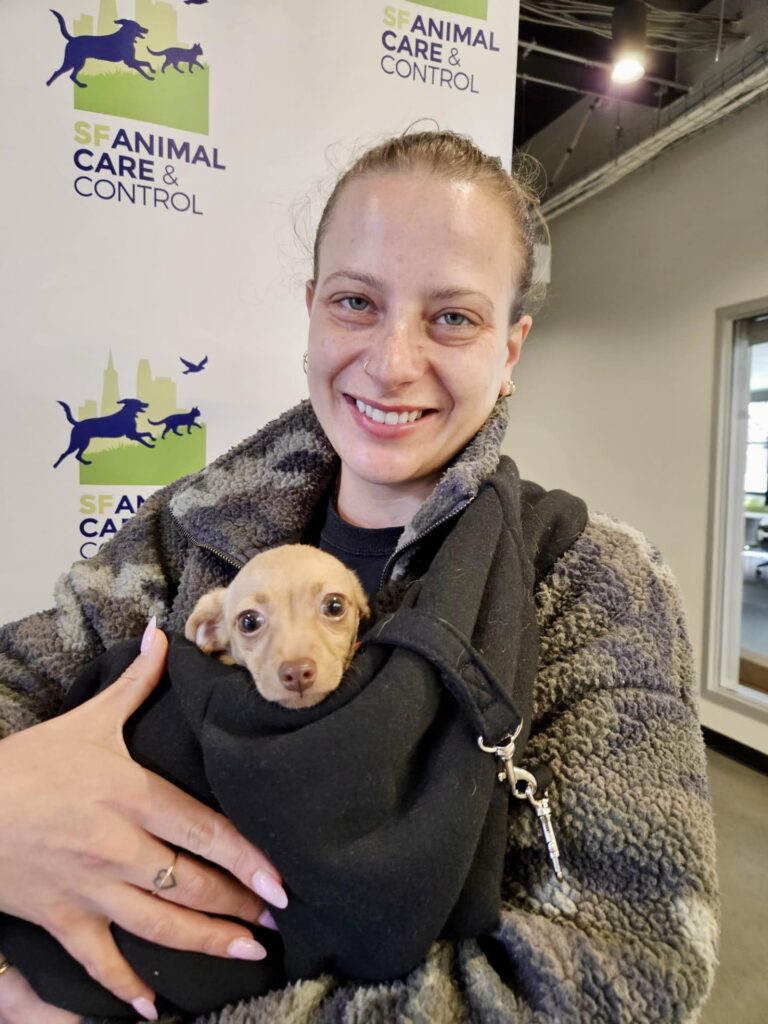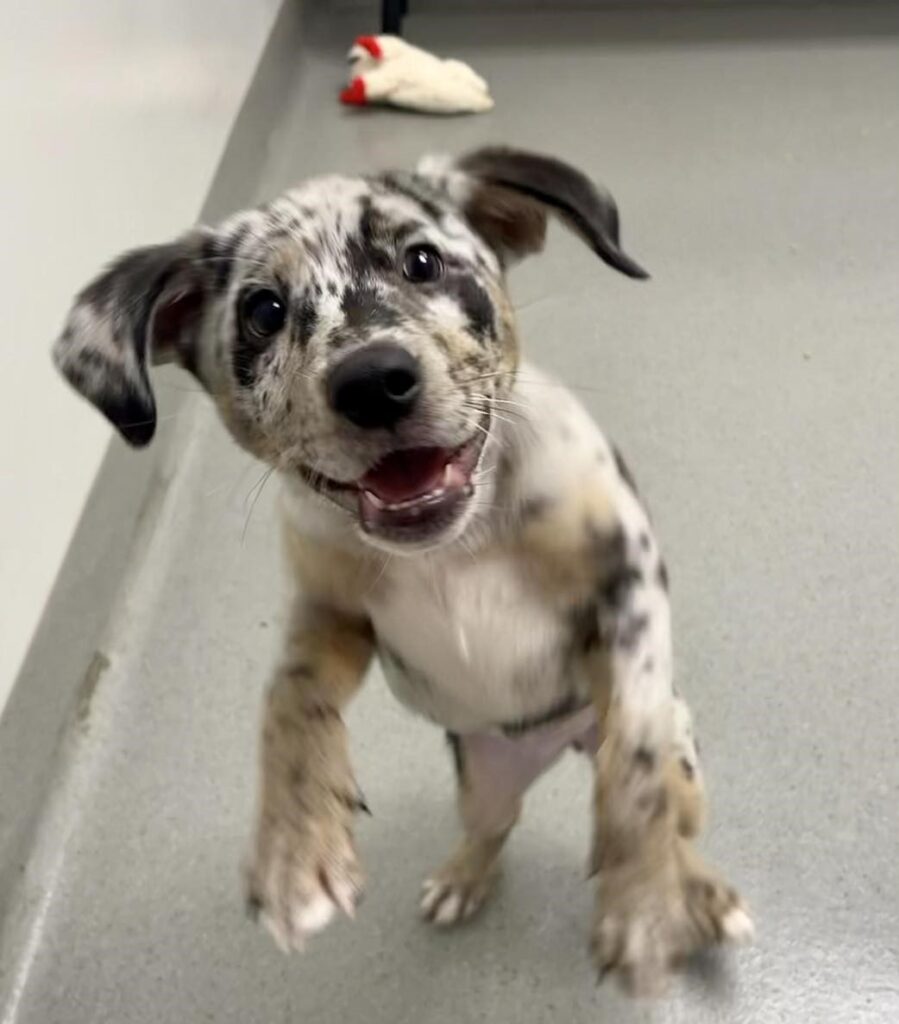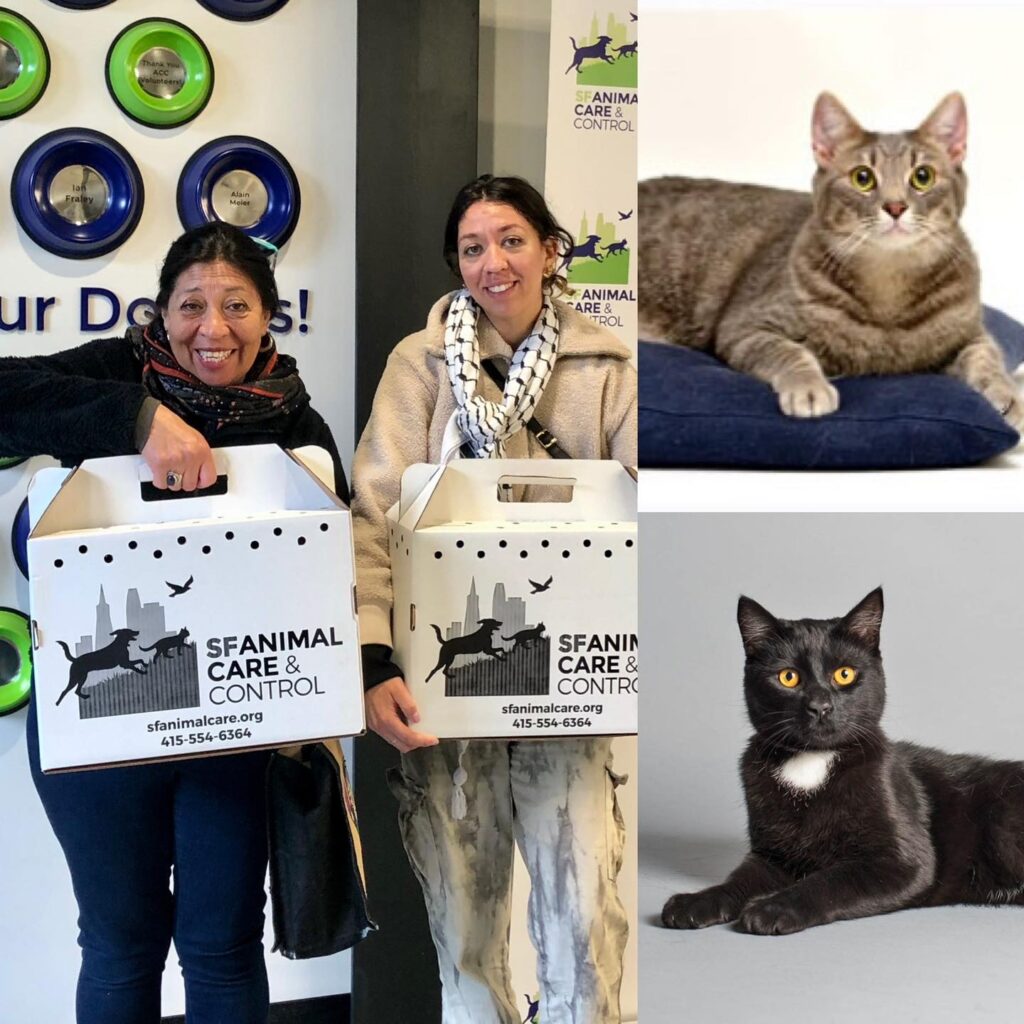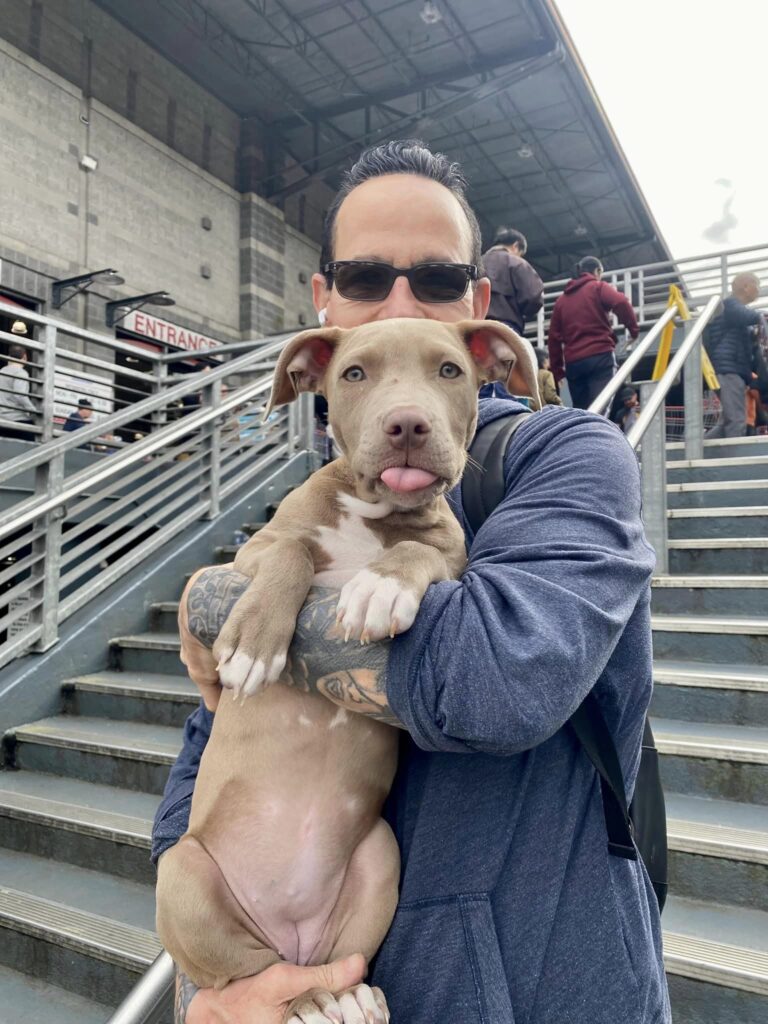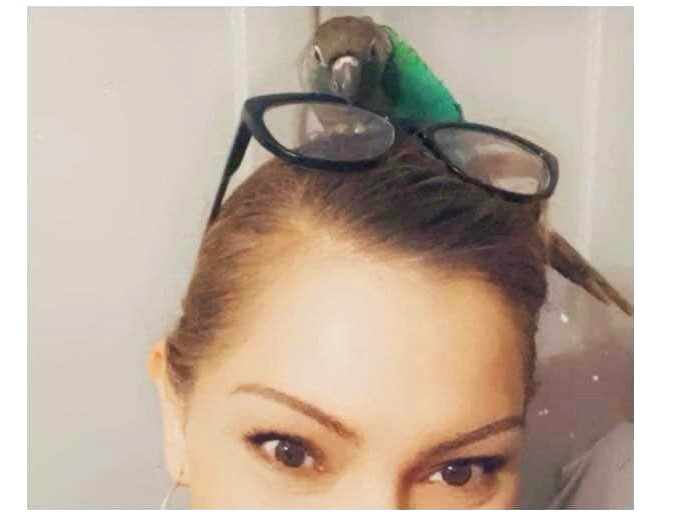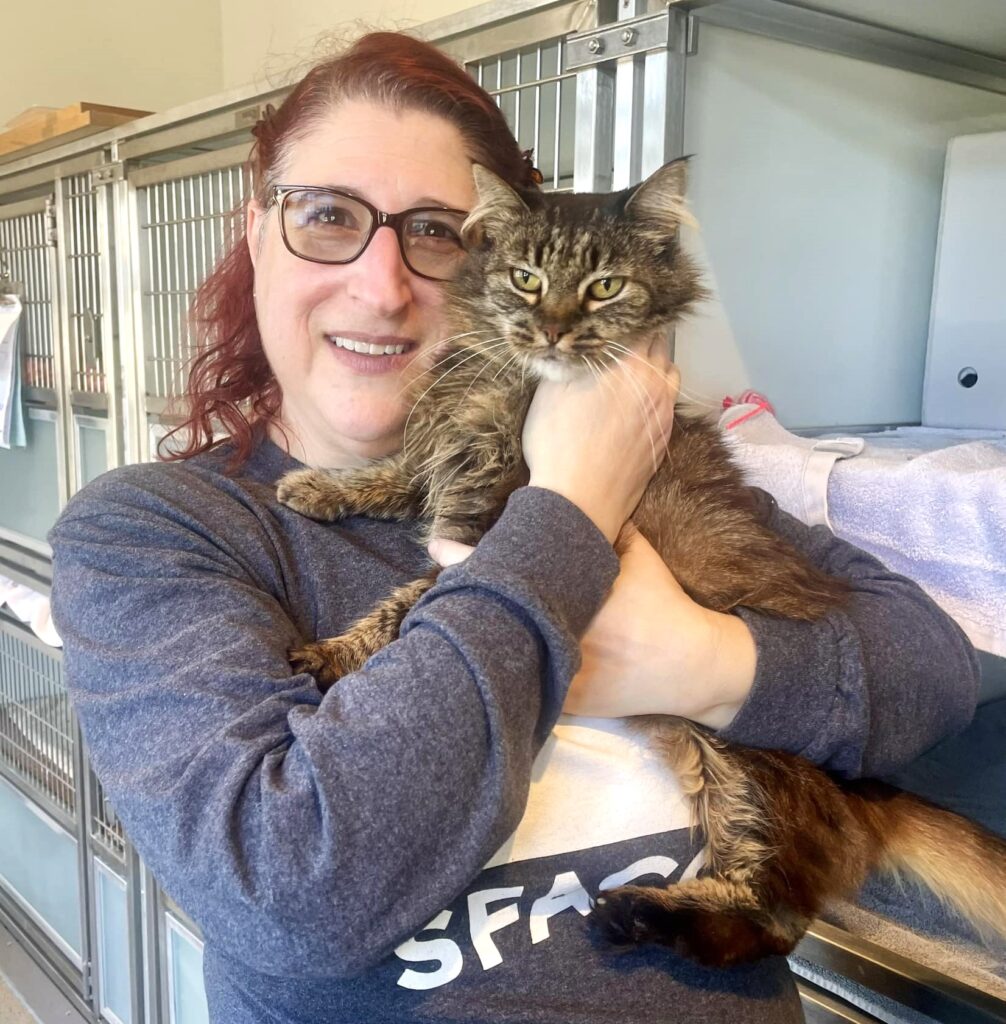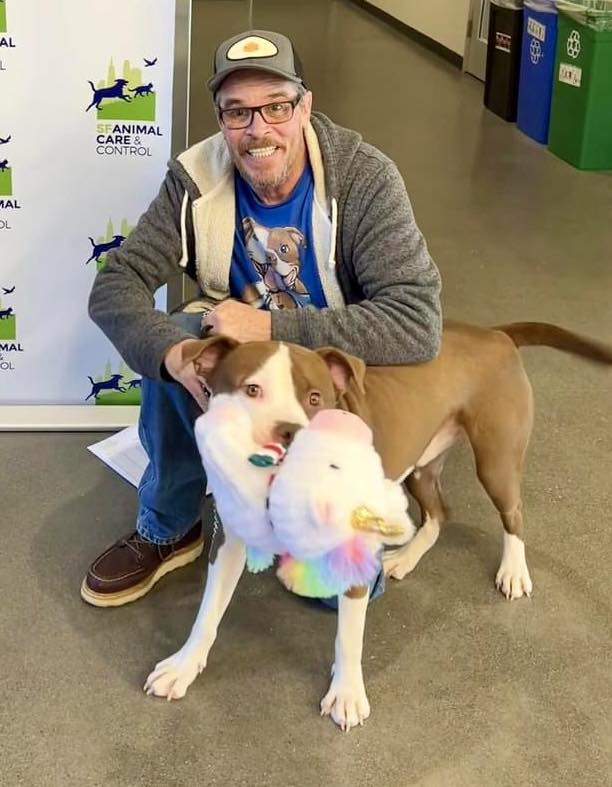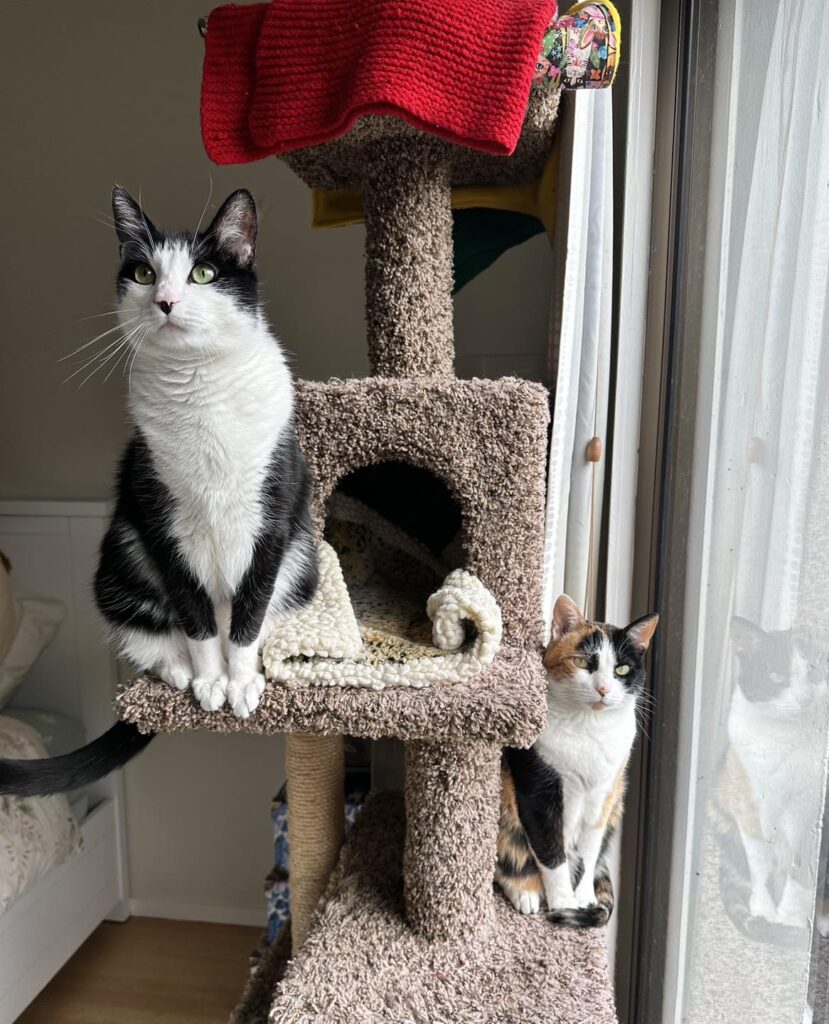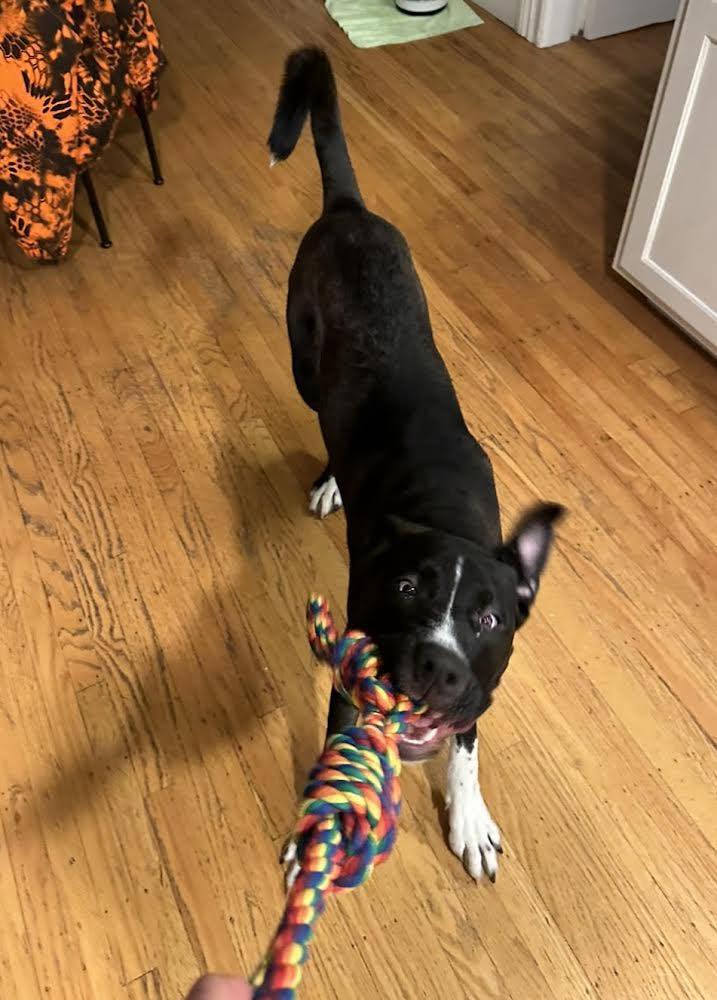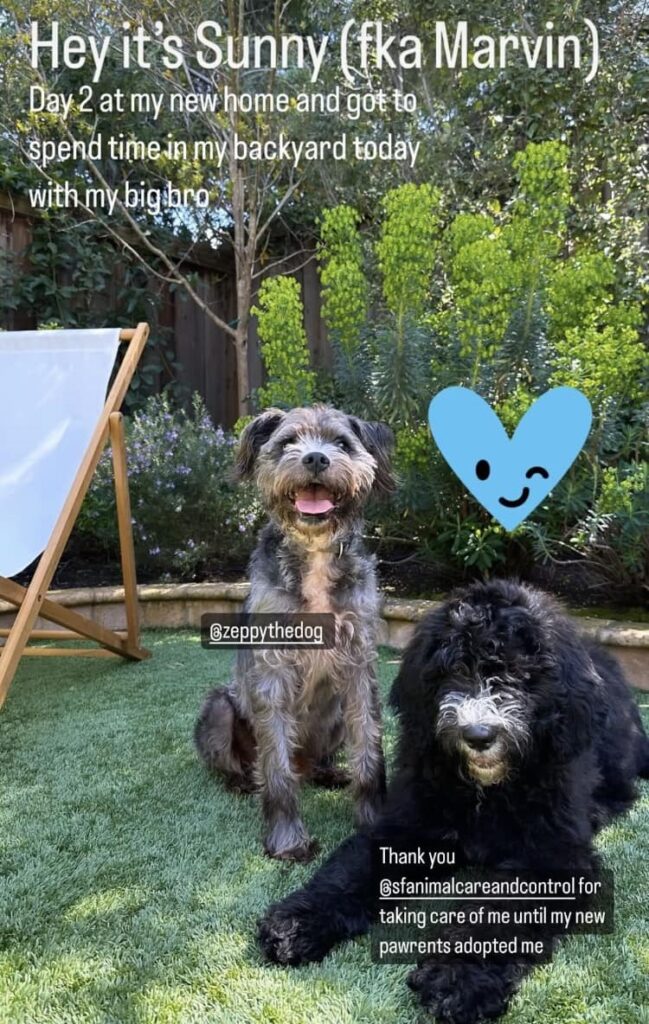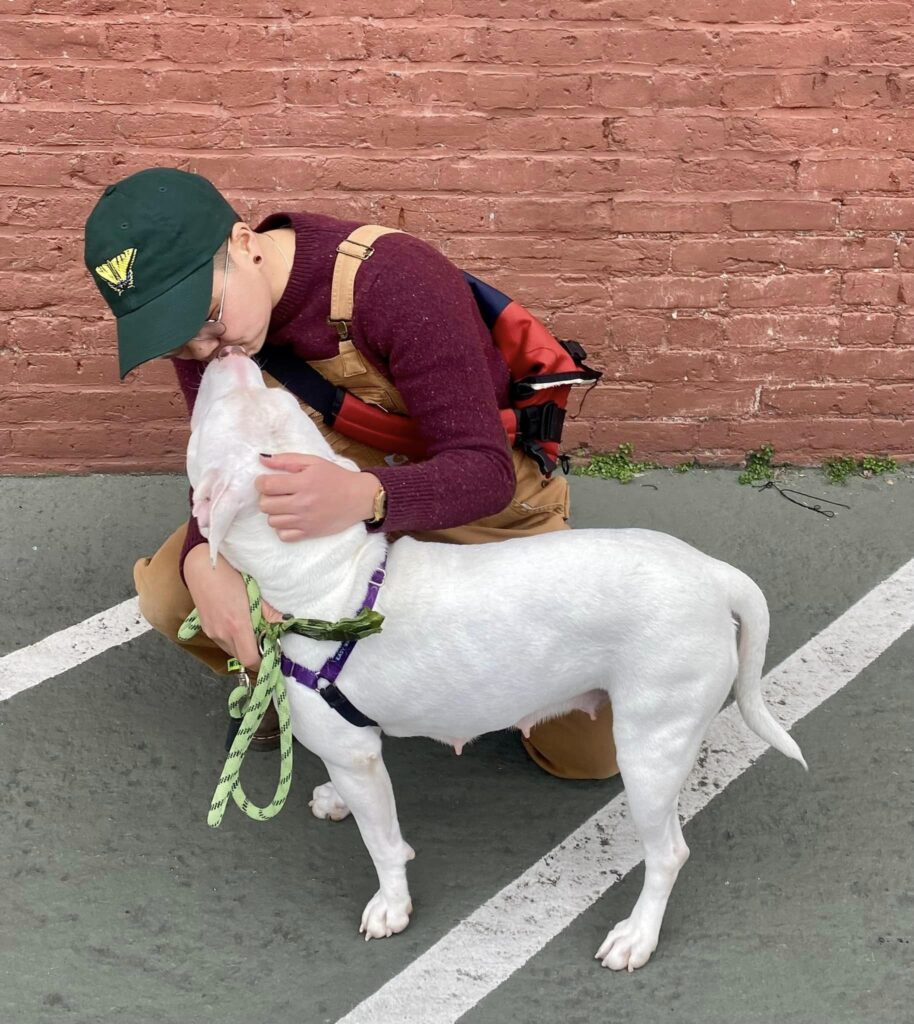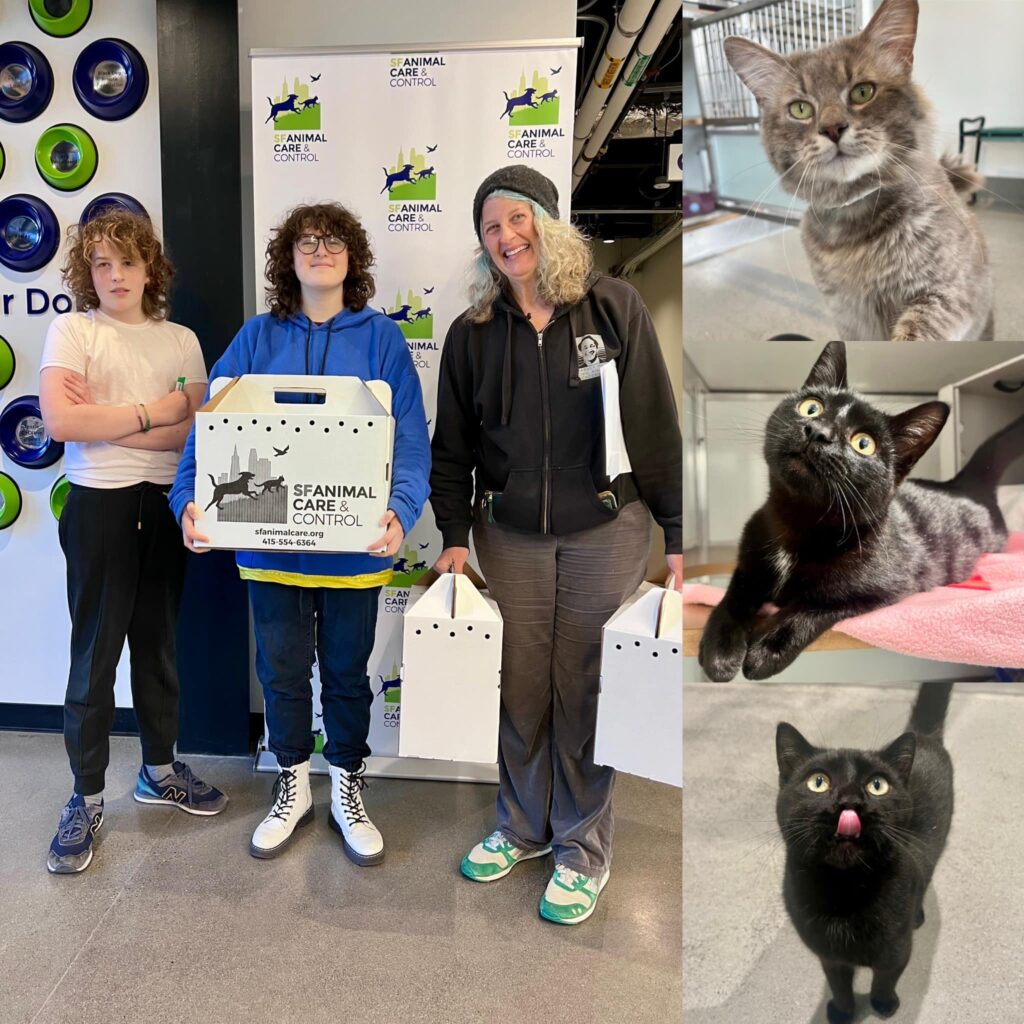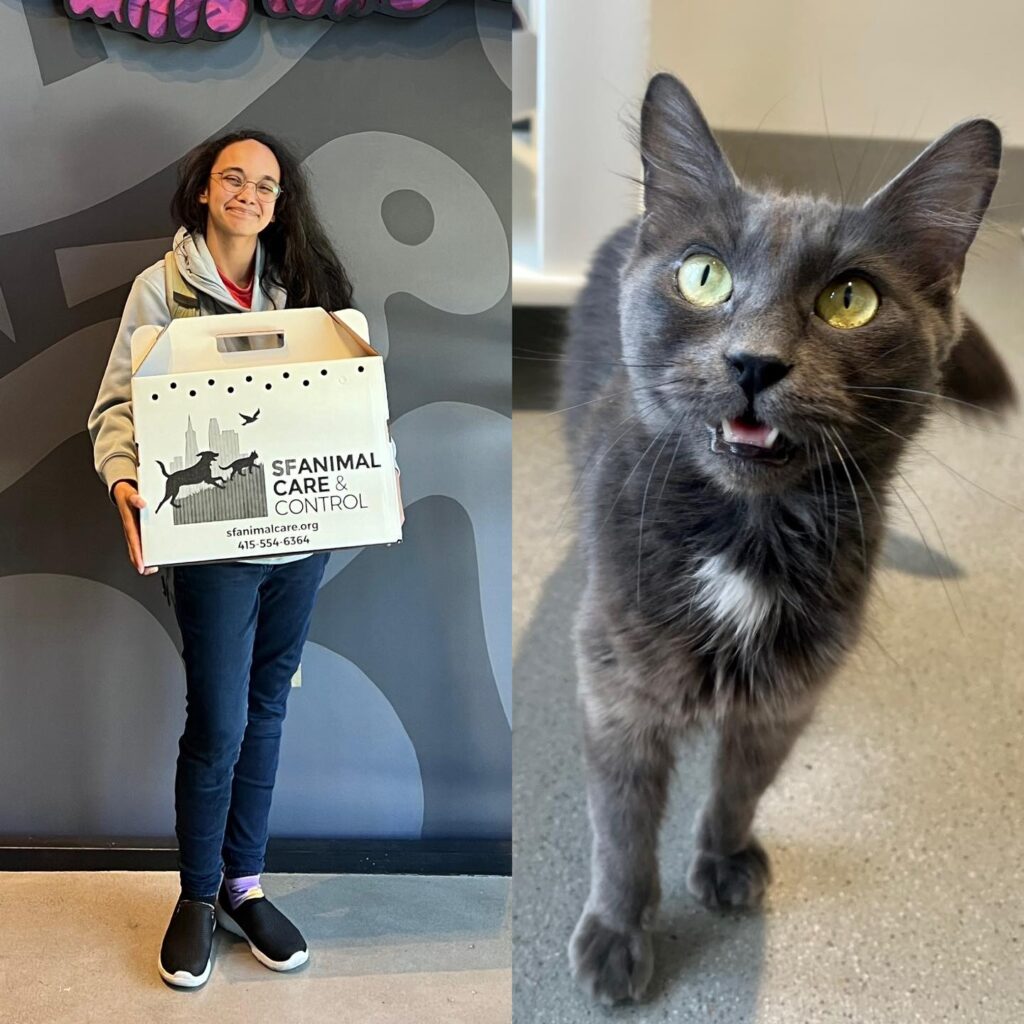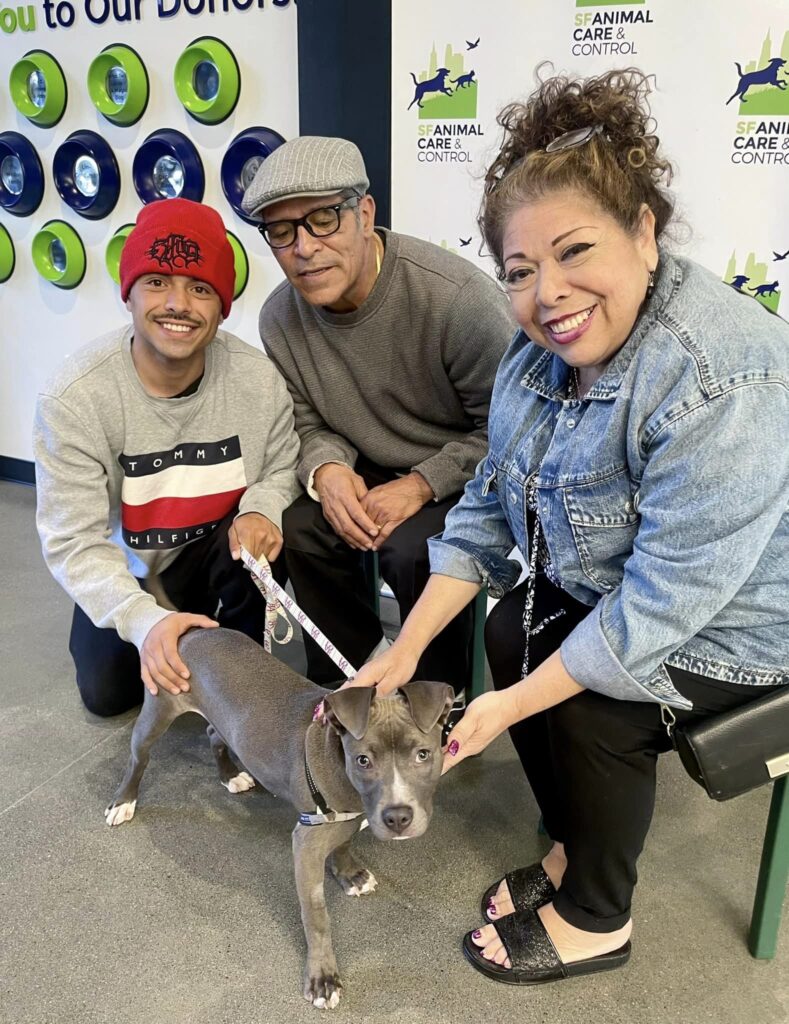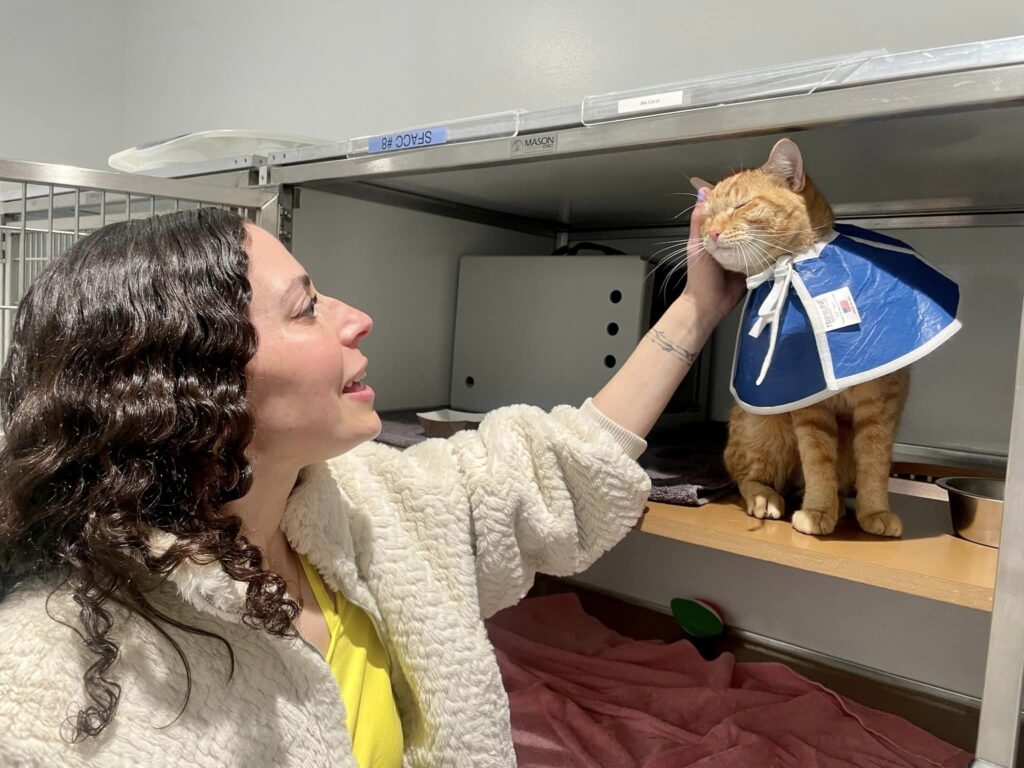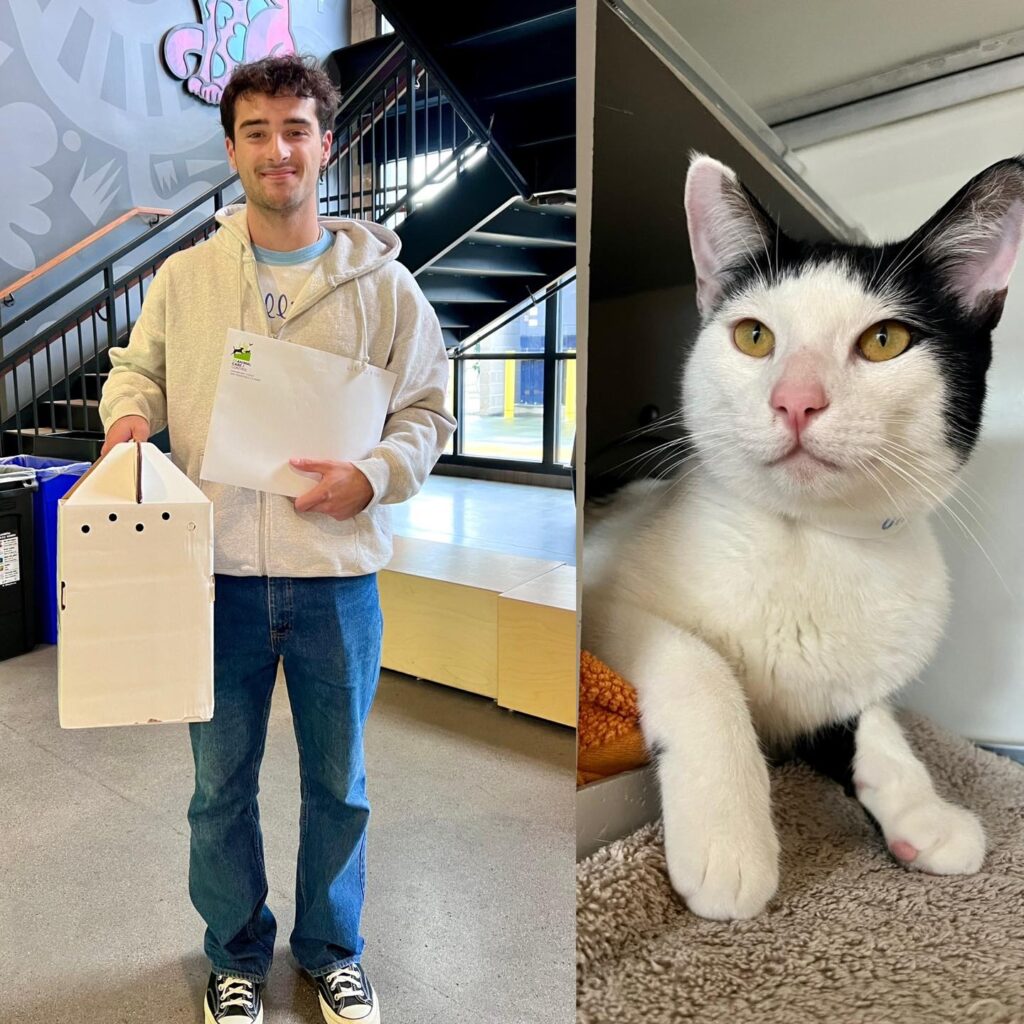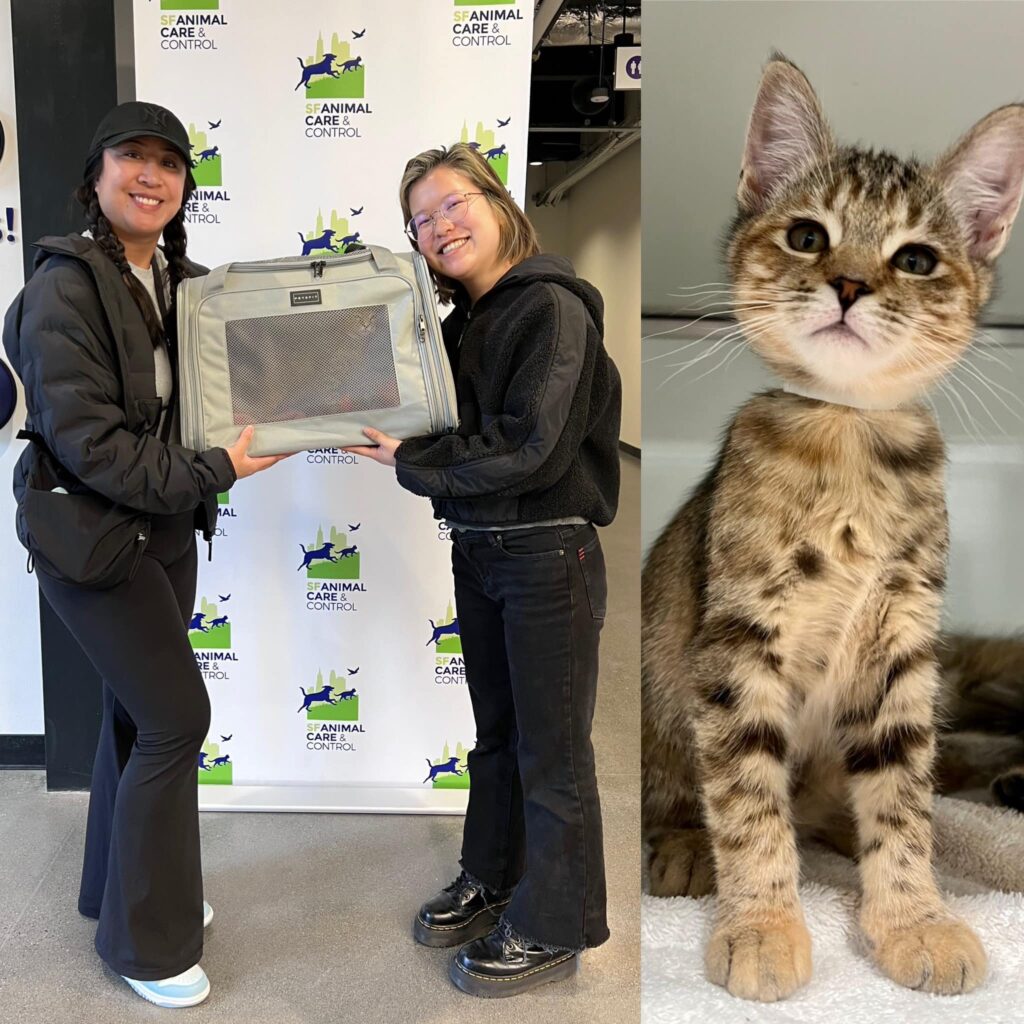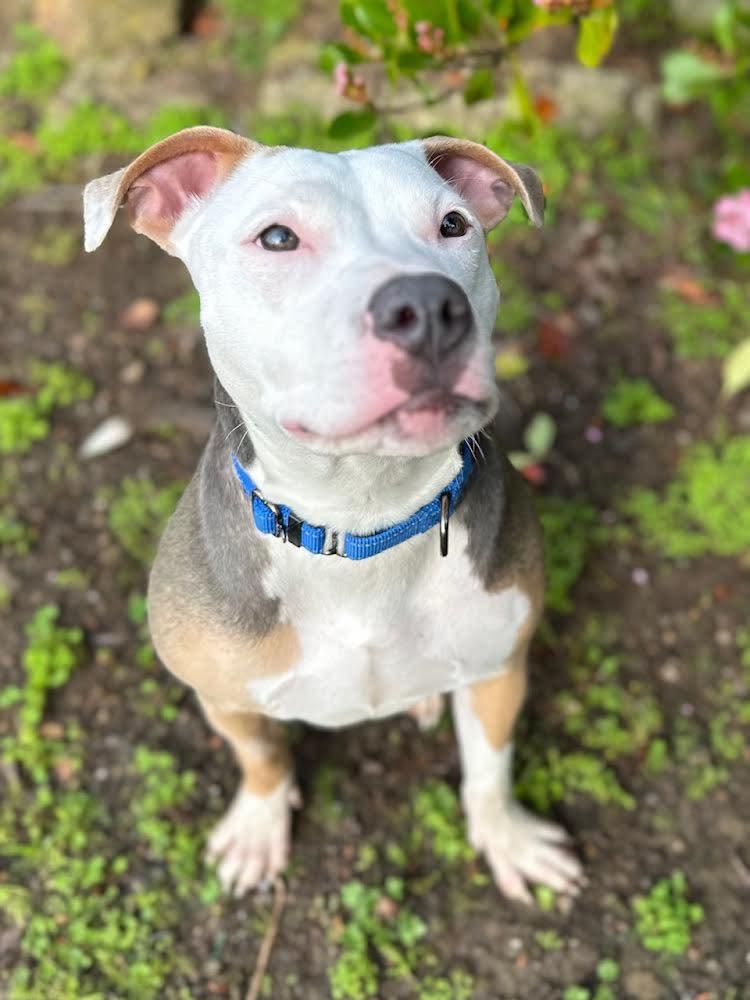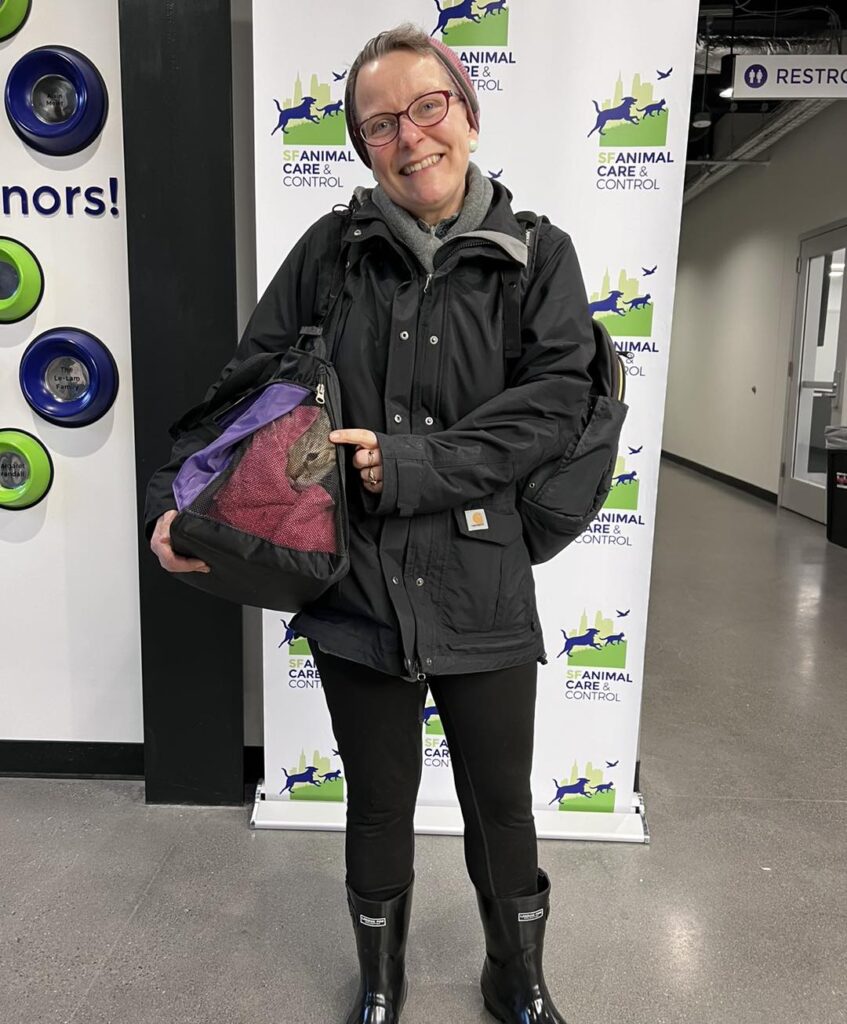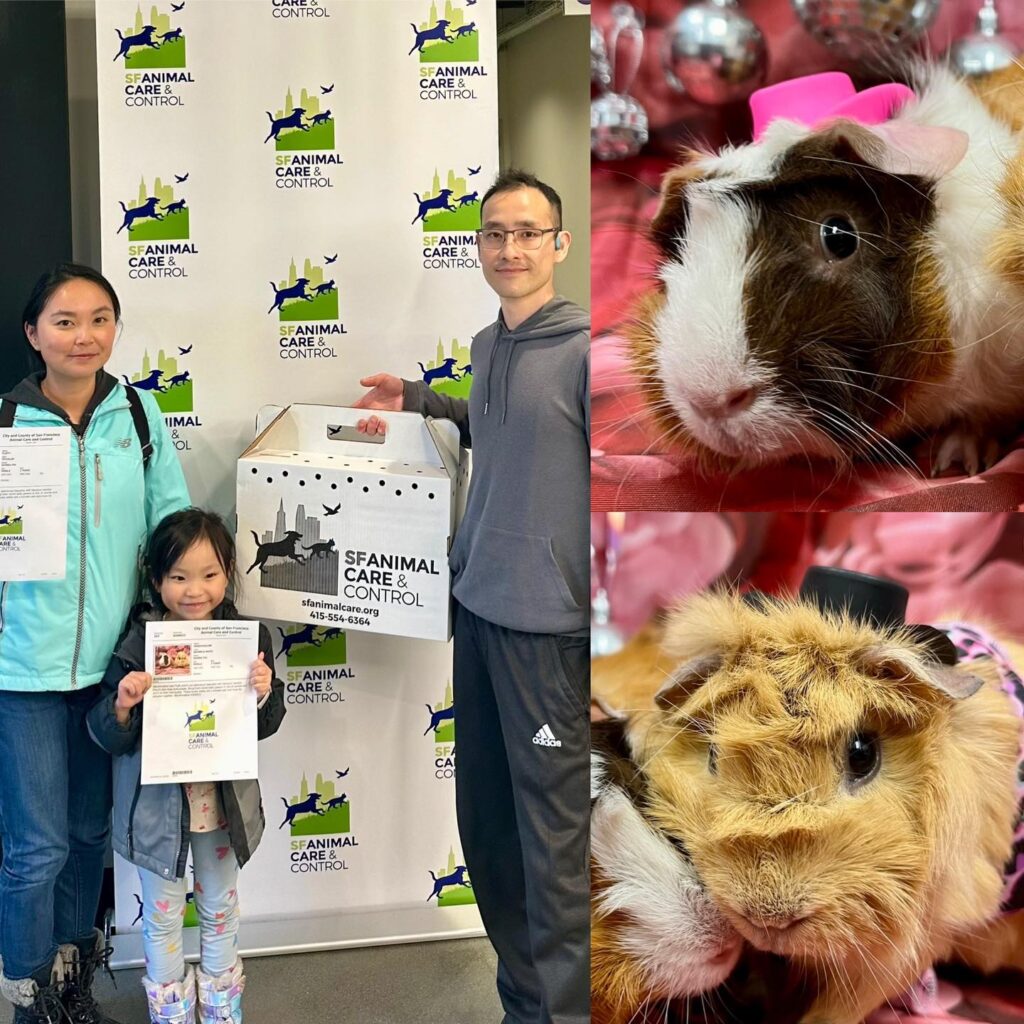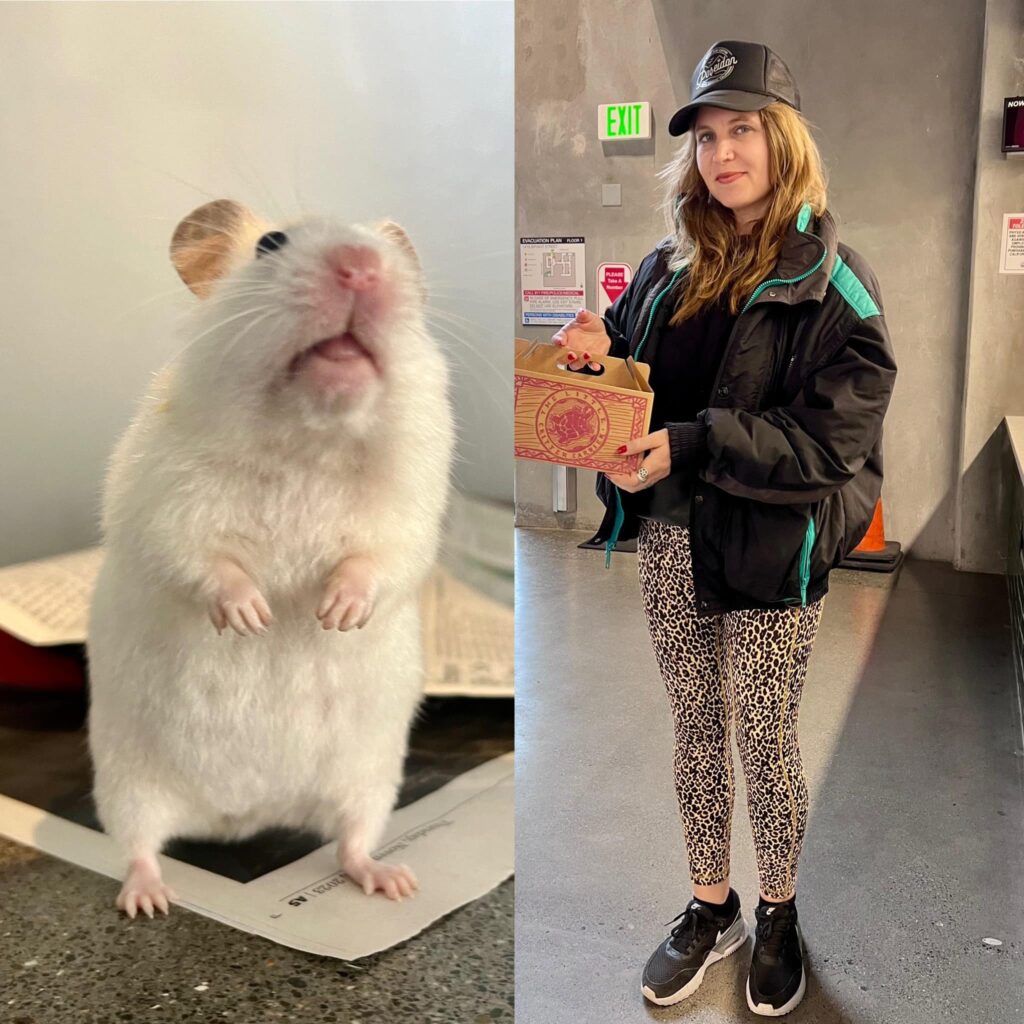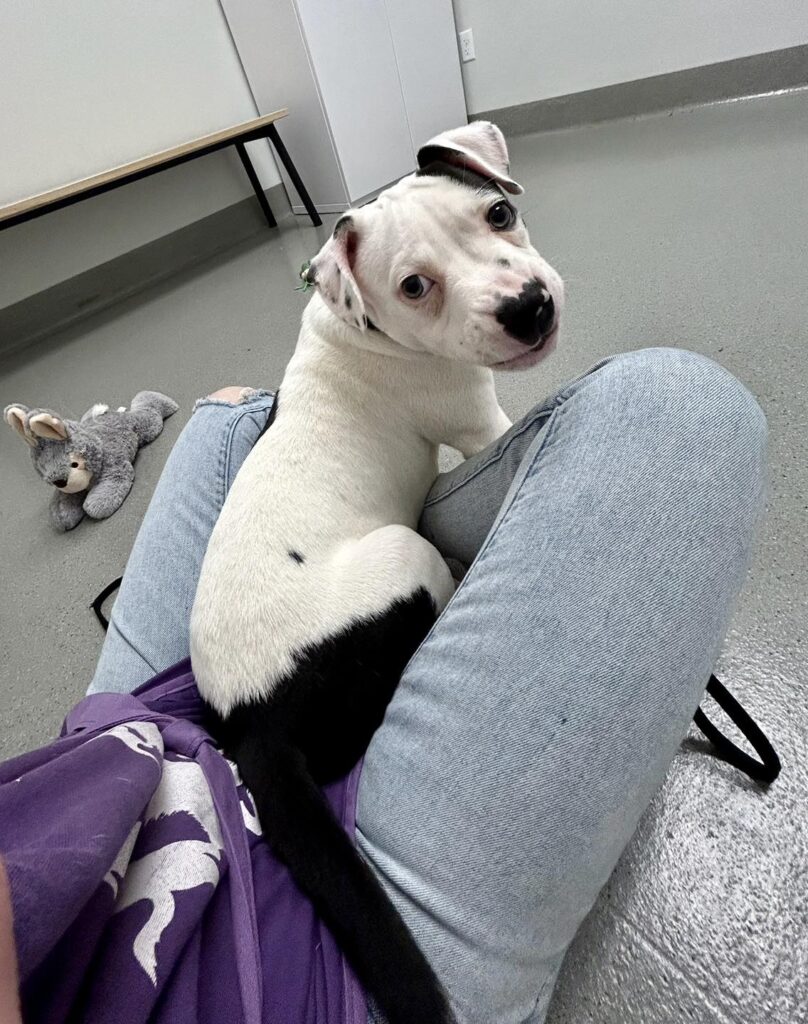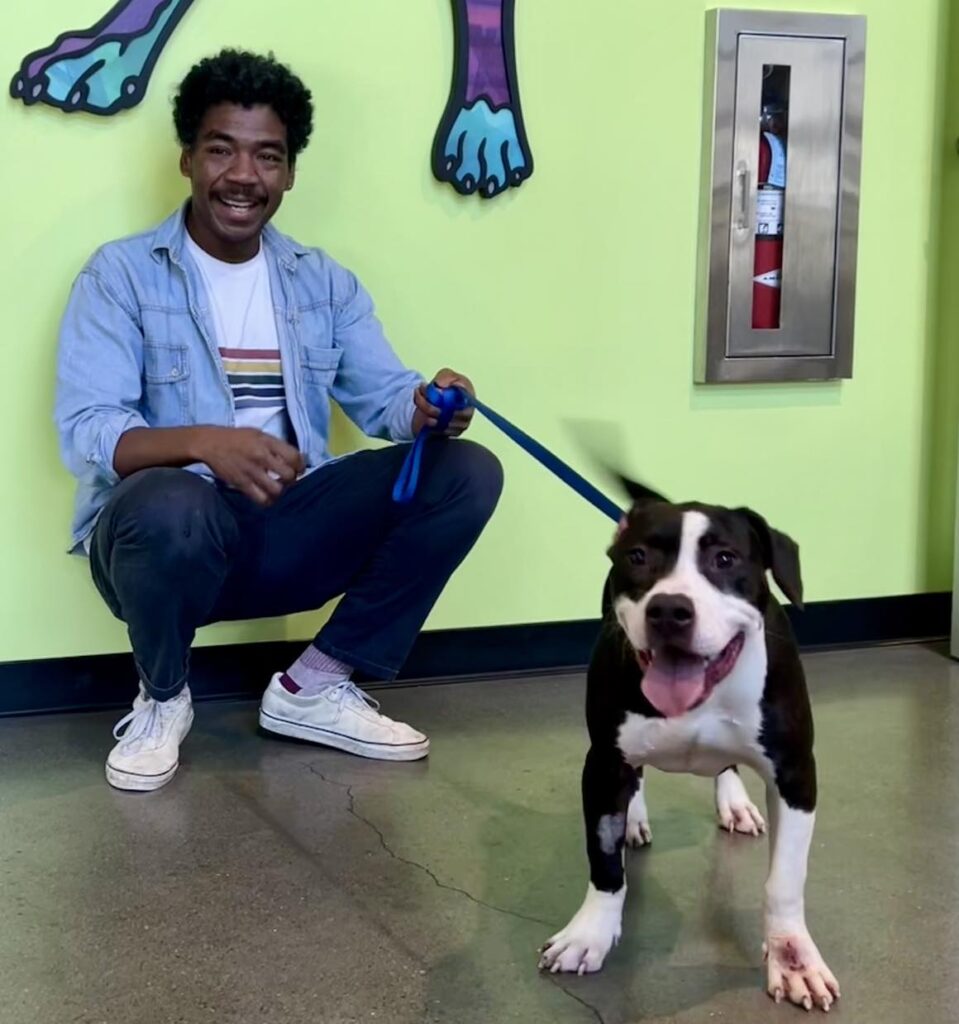
Fun and friendly pup Benji was adopted June 1!
Sweetie pie pup Sara has gone home! She’s already got her new parents snuggling.
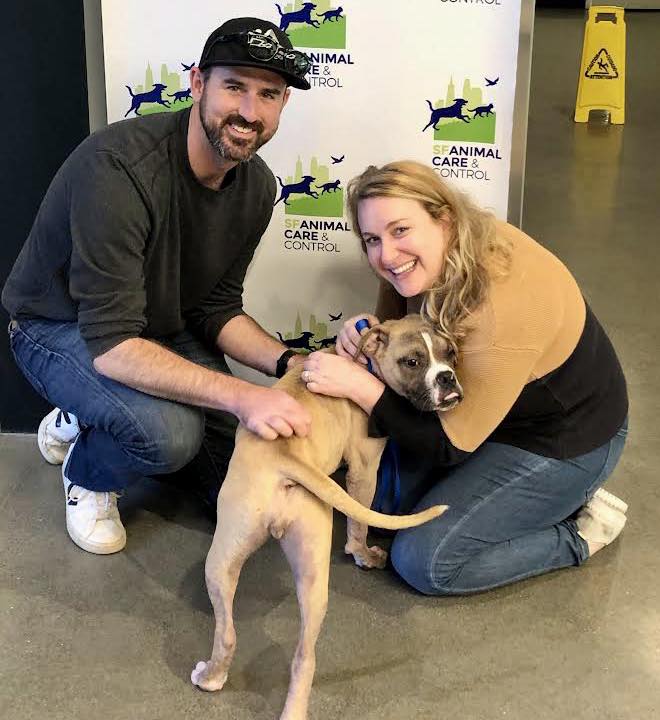
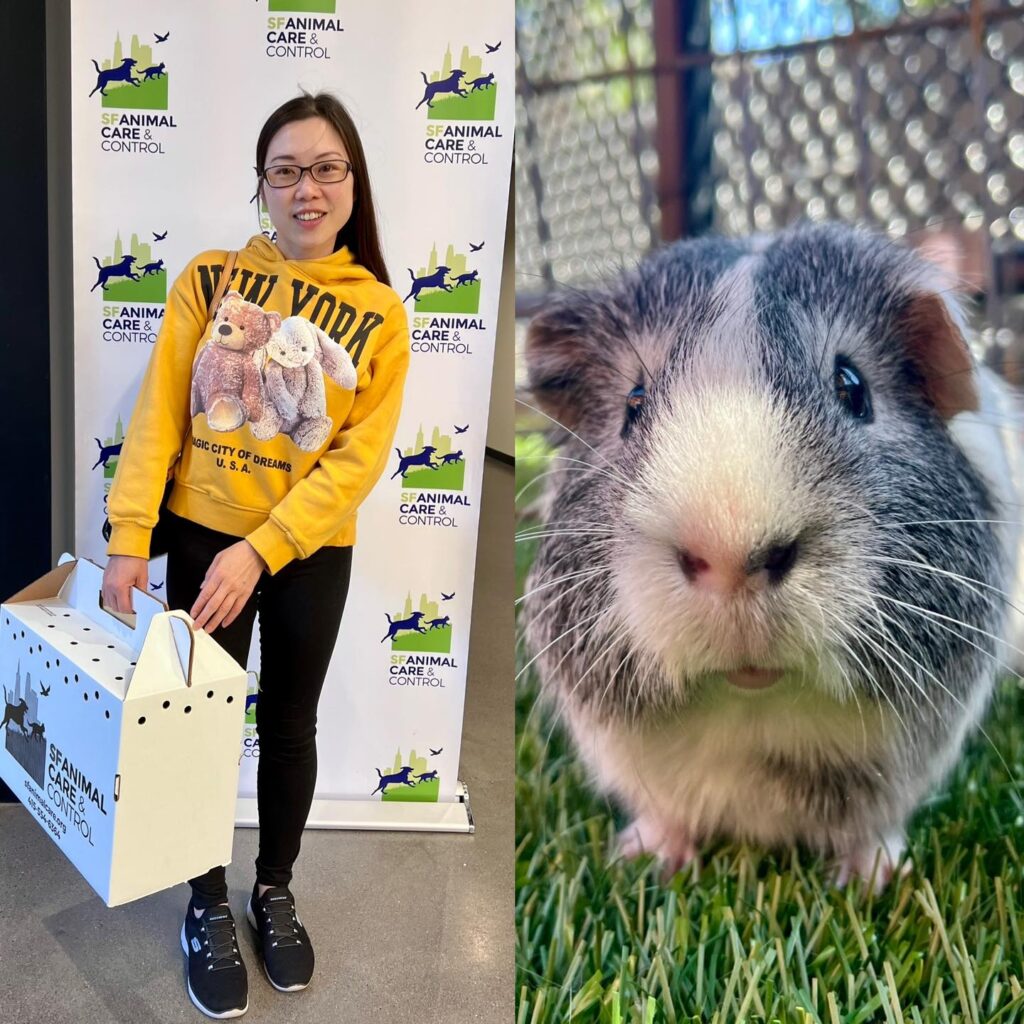
Friendly guinea pig boy Fluffy.
Sweet tuxie Spike has been adopted! He arrived at our shelter with injuries on his back, but thanks to our vet team he is on the mend and heading home!


Double adoption update: “We got two cats from ACC; Teddy and Ellie, a few weeks apart from each other (Ellie’s name at ACC was Loba). They’ve traveled across the country with us for our work and school, all the way to Washington DC and back to SF, so they’re great little travelers!”
Kitten cutie Earth was adopted today! He’s going to live with a feline sibling. His new name is Blue.
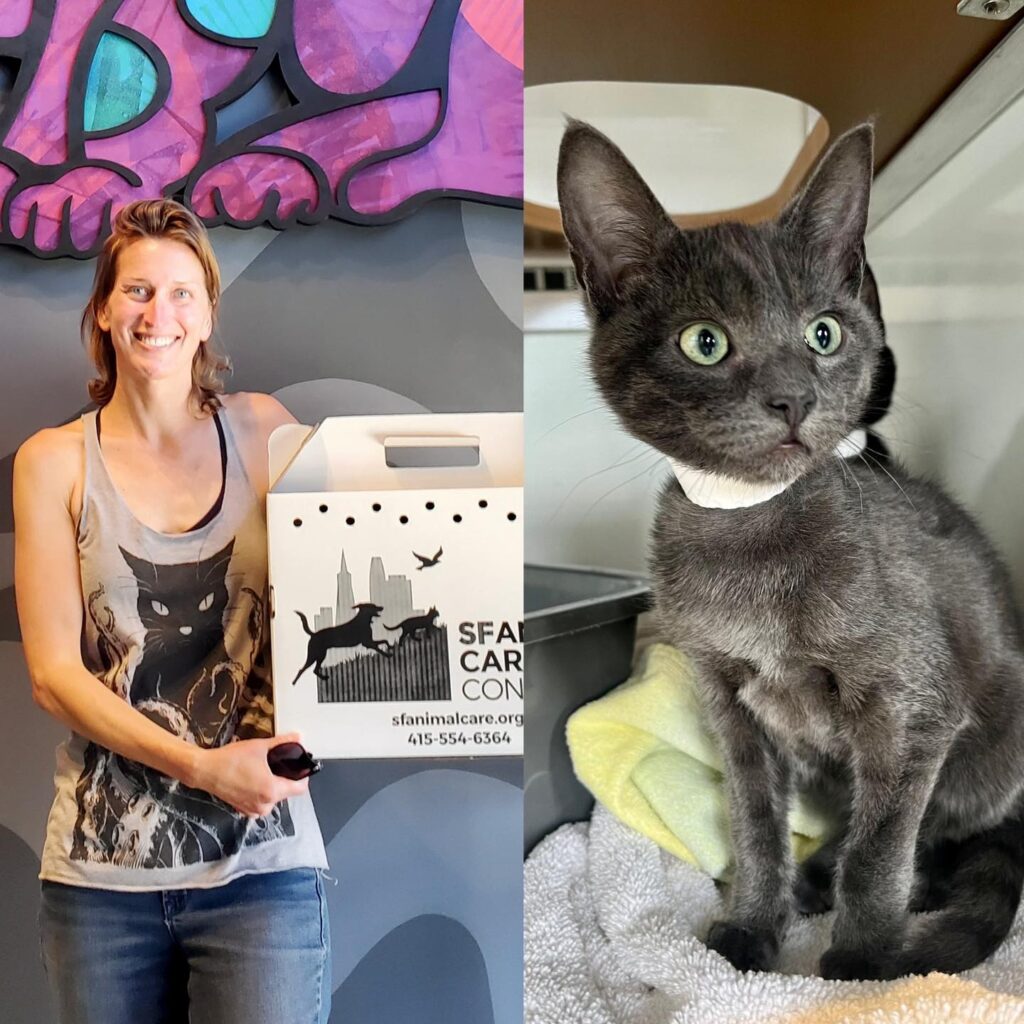

“My wife and I adopted Mercury of The Milky Way puppies (in April of this year) and he’s doing great and we love him so much! Thanks for all you do!”
Sweet Dax has gone home, where he’ll have an older canine sister to play with him and show him the ropes of his new house.
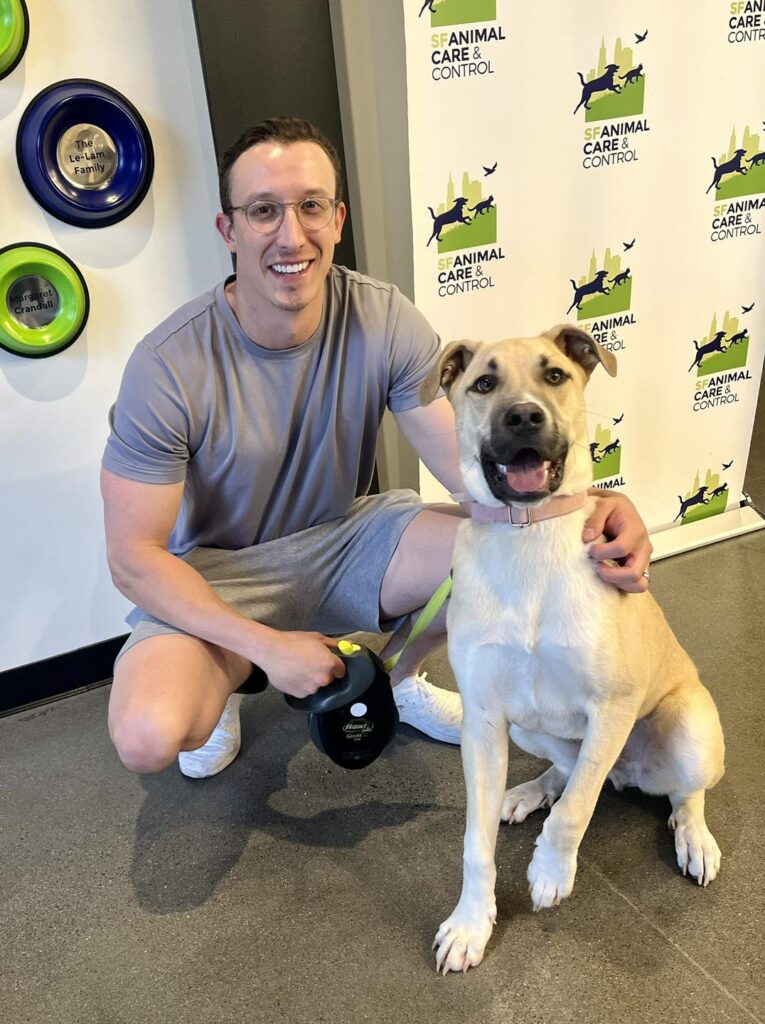

Party’s new family!
Update for Swizzle (fka Suzy) adopted as a puppy in February 2023: “Her name is now Swizzle – because all Pibbles need silly names – and is quite calm, quiet & ridiculously friendly. She wants to meet everyone! She still has a few things to learn but has settled into the daily routine quite nicely. She’s 65lbs, about 20lbs more than her brother, Boone. Her days are spent loafing around in the sun, or on the bed, or the couch, or wherever Boone happens to be napping of course. She likes her walks and trips to the beach, or hikes, but she really loves to snuggle under the blankets on the couch.”
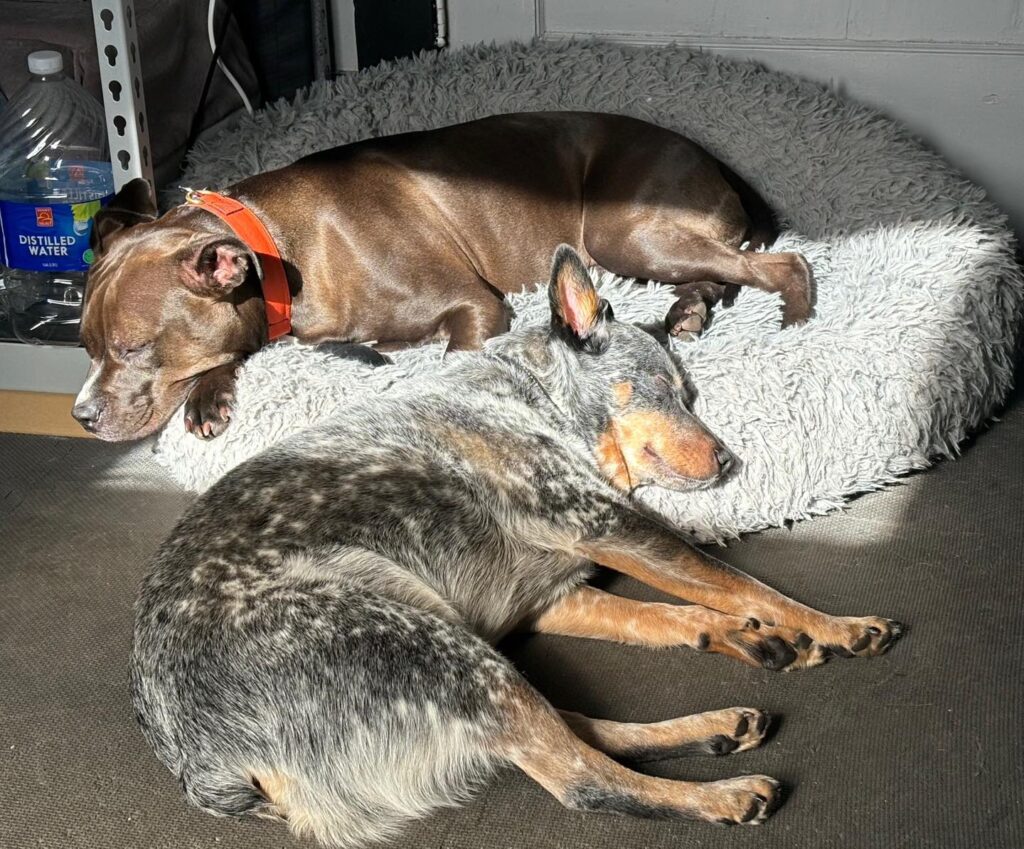

Adoption update! “Thank you, again, for saving my Quince’s (now Quincy’s) life. We just celebrated our one-year adoption day anniversary. He has brought me so much joy, laughter, love, adventures, and shenanigans each and every day since then. I am and will always be full of gratitude for your team and his foster mother.”
Pipsqueak, our teeniest adoption of the week, went home today. She already has a signature head tilt, so maybe modeling is in her future?
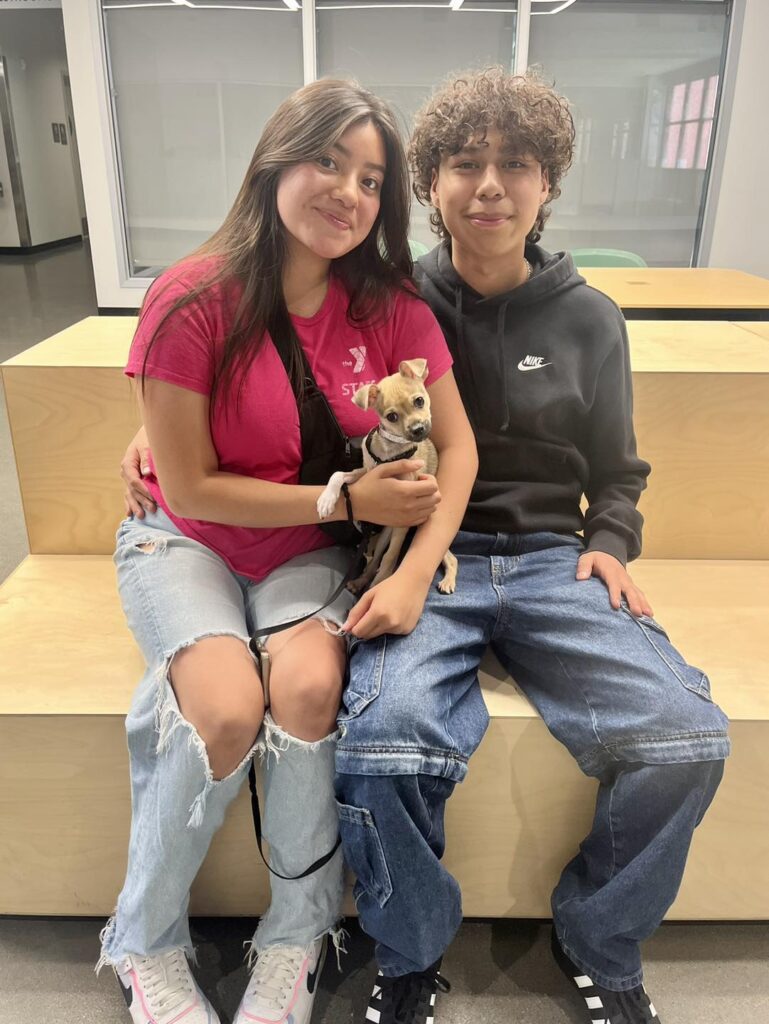
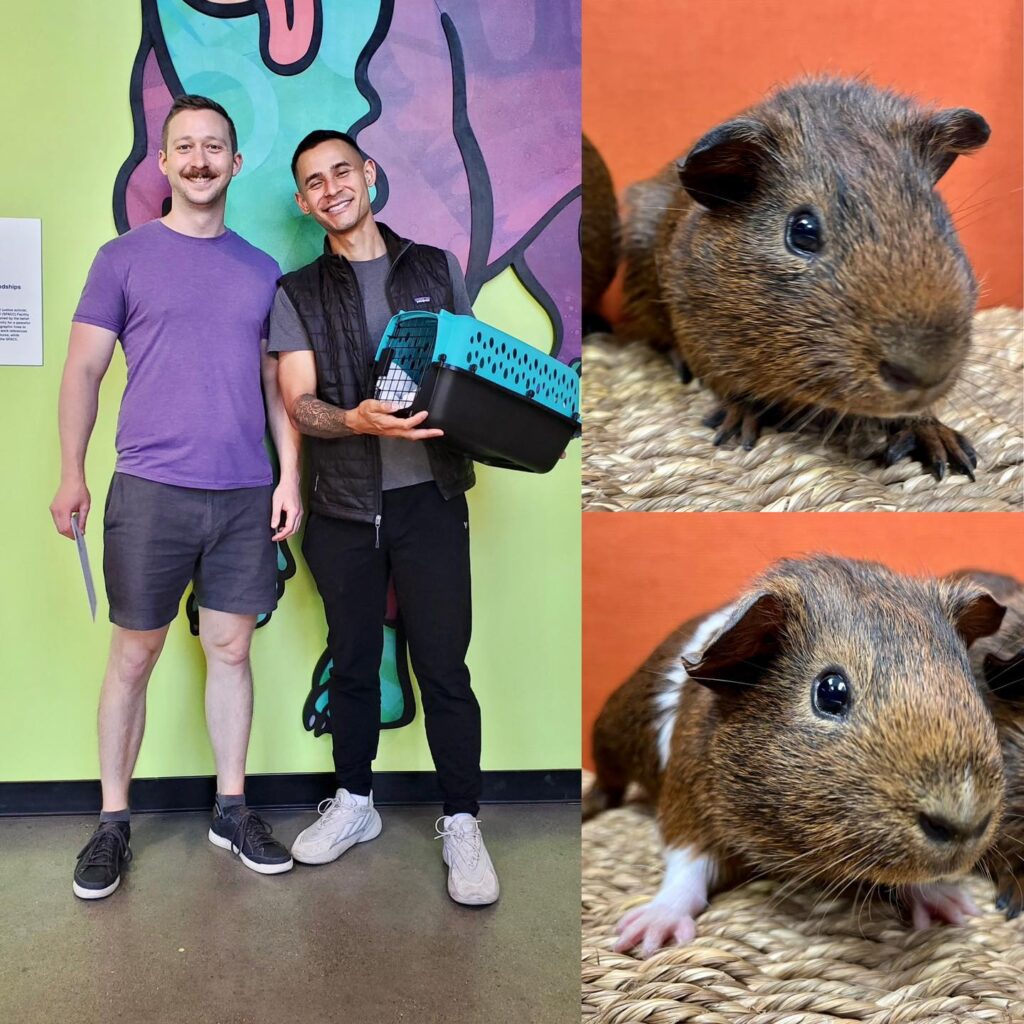
Hooray! Guinea pig brothers Harry and Ron were adopted together.
Woohoo! We had a triple kitten adoption today! Mia, Ginger, and Oreo came to the shelter together and have gone home together, where they’re going to live with two dog siblings. And they have new names: Penelope, Theo, & Pudding!


Cutie pie Emerald was adopted last week and is enjoying being out and about with her new dad! Her new name is Emmy
Sweet Candace was adopted today after waiting patiently for 2 months! Here she is saying goodbye to one of her friends, Animal Care Attendant Mattie (her adopter preferred not to appear in an adoption photo). Happy tails Candace & her new family!
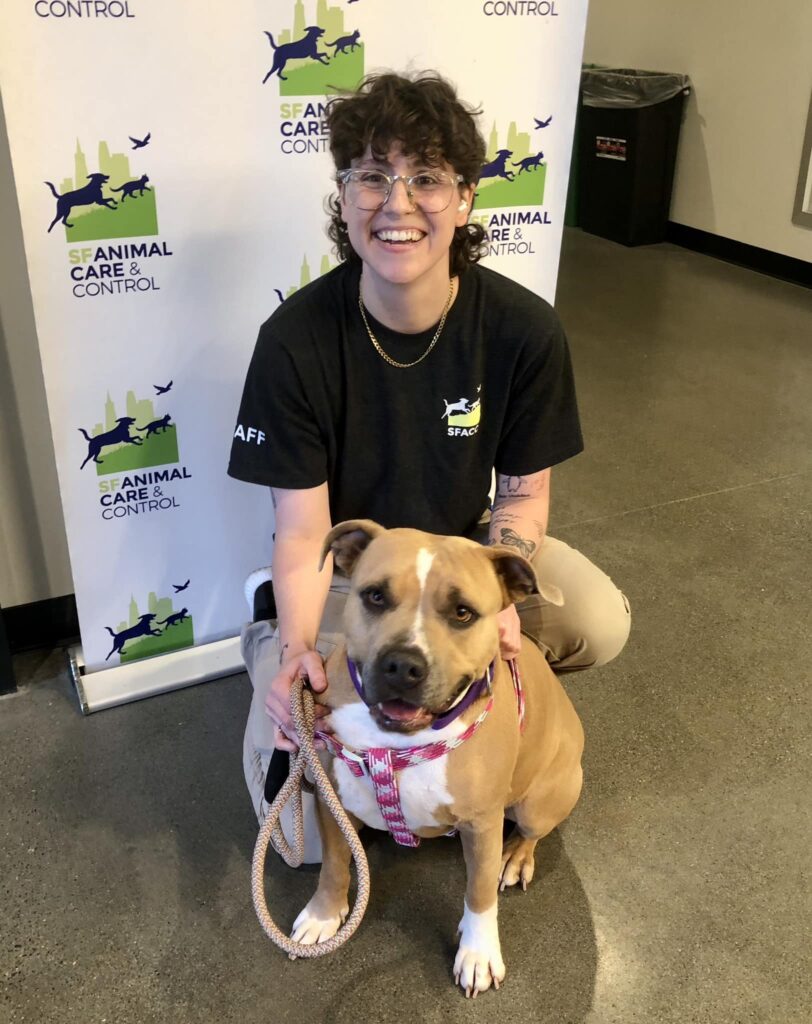

BobaTea
Cocoa Bean

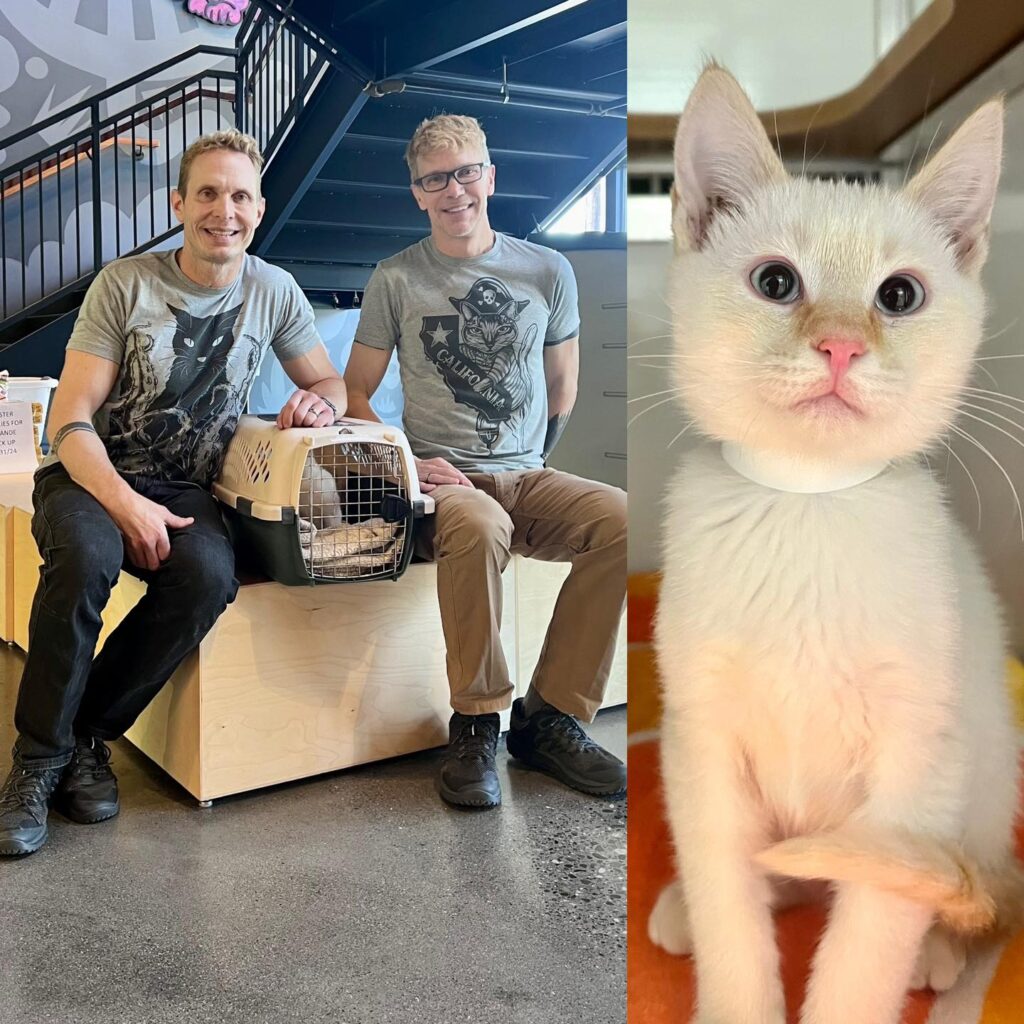
Dreamsicle
Goldie


Jose and Cheryl
Kirk

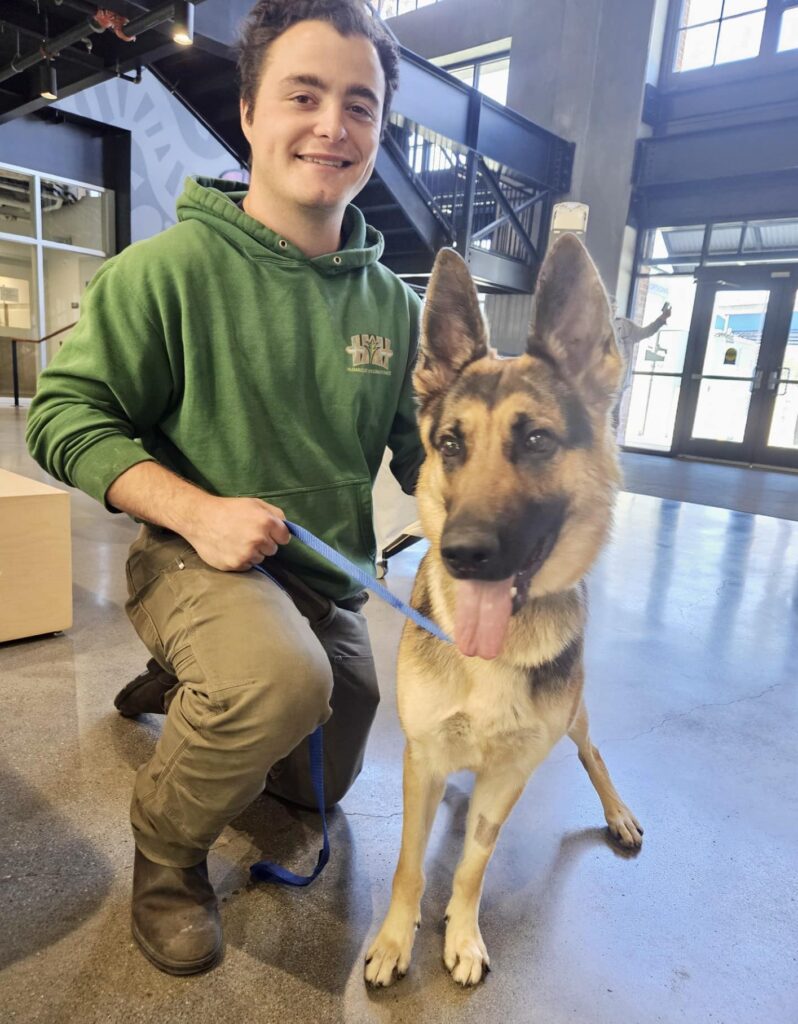
Laguna
Carlos
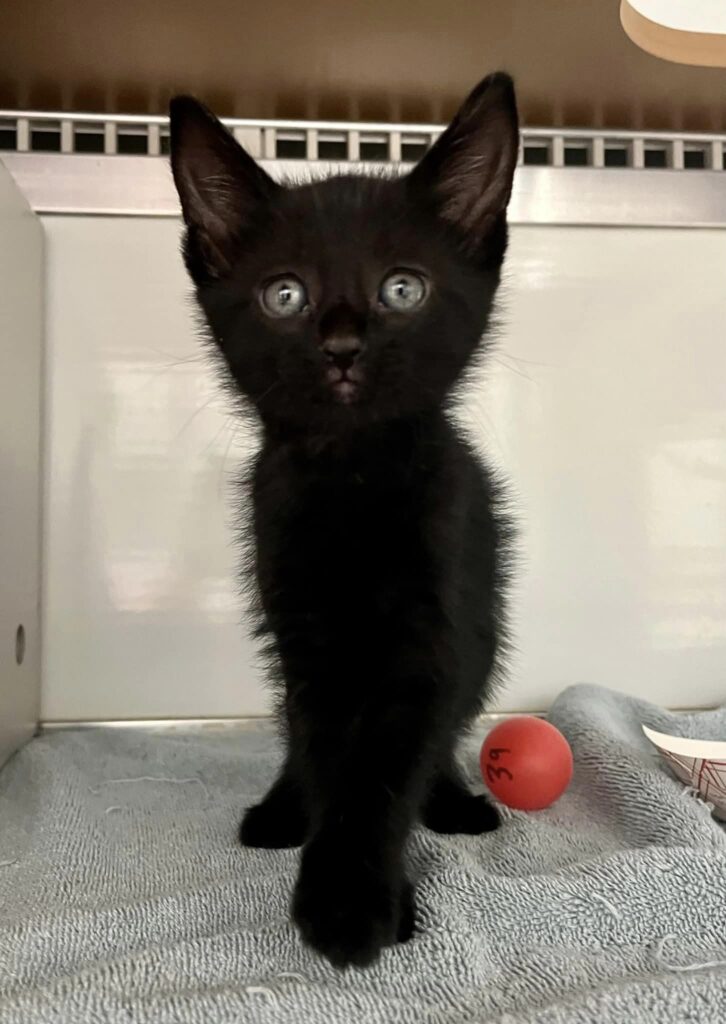
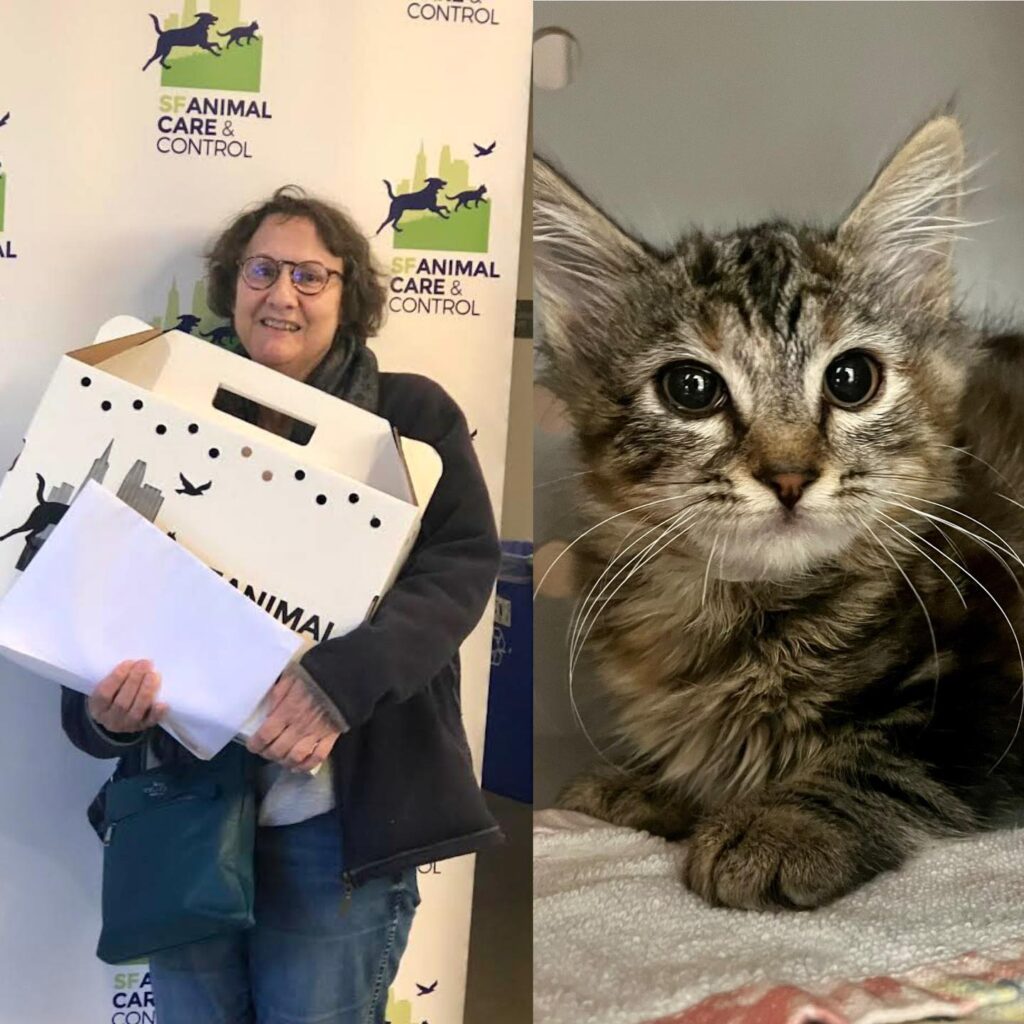
Pickles
Pinto Bean
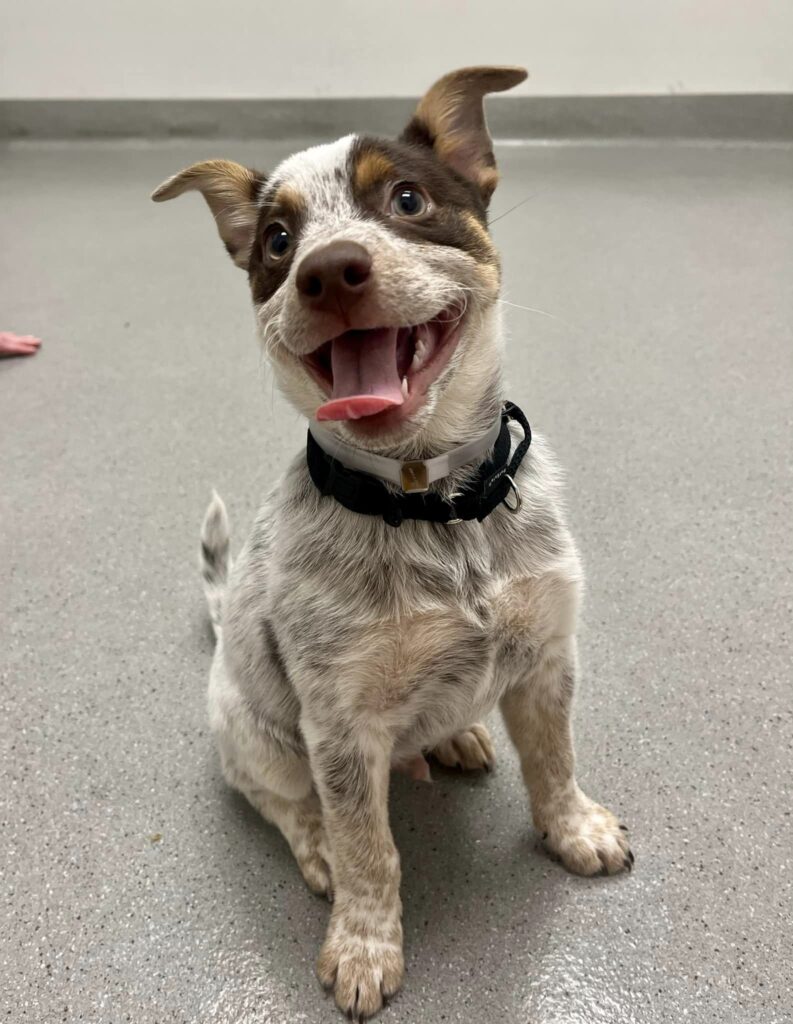
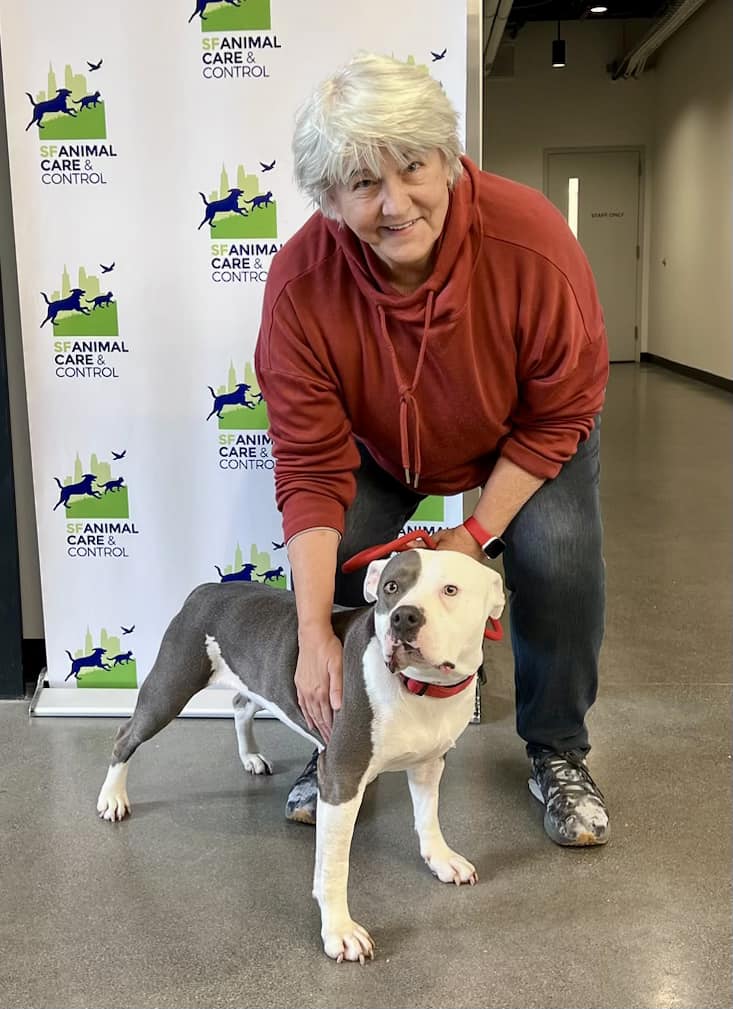
Skylar
Spring

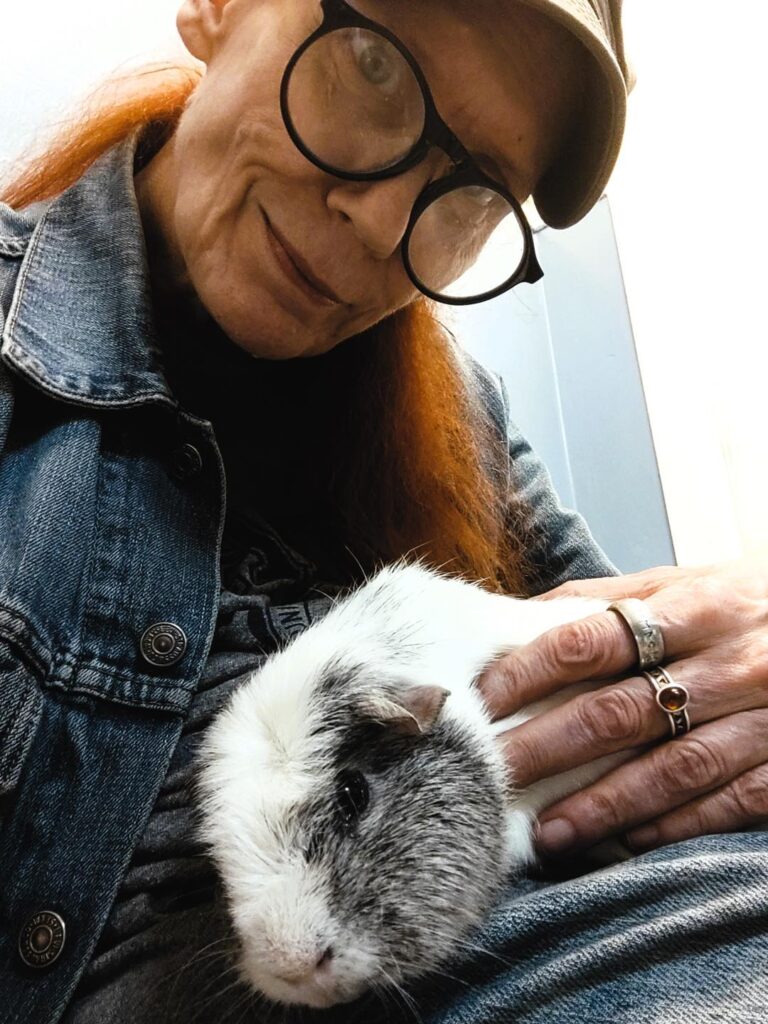
“I adopted Freddy, a very large guinea pig of unknown age, less than a year ago. My habit is to adopt small seniors who’ve been surrendered to your facility, when I can, and give them the best retirement I can come up with.
Freddy lived in a Radio Flyer wagon in my apartment, a studio at Opera Plaza in SF, until today, when the vet euthanized him as he had an untreatable mass in his belly that was only getting worse. He as always was stoic and serene, I was very sad to see him go. He was my friend.
Just wanted to let you know, especially the ACC officer who’d fostered him in her home before he came to me. He was much loved, and I think did get that good retirement we’d hoped for, just a bit shorter than expected. Thank you for giving me that opportunity. I’ll be by again in a while.”
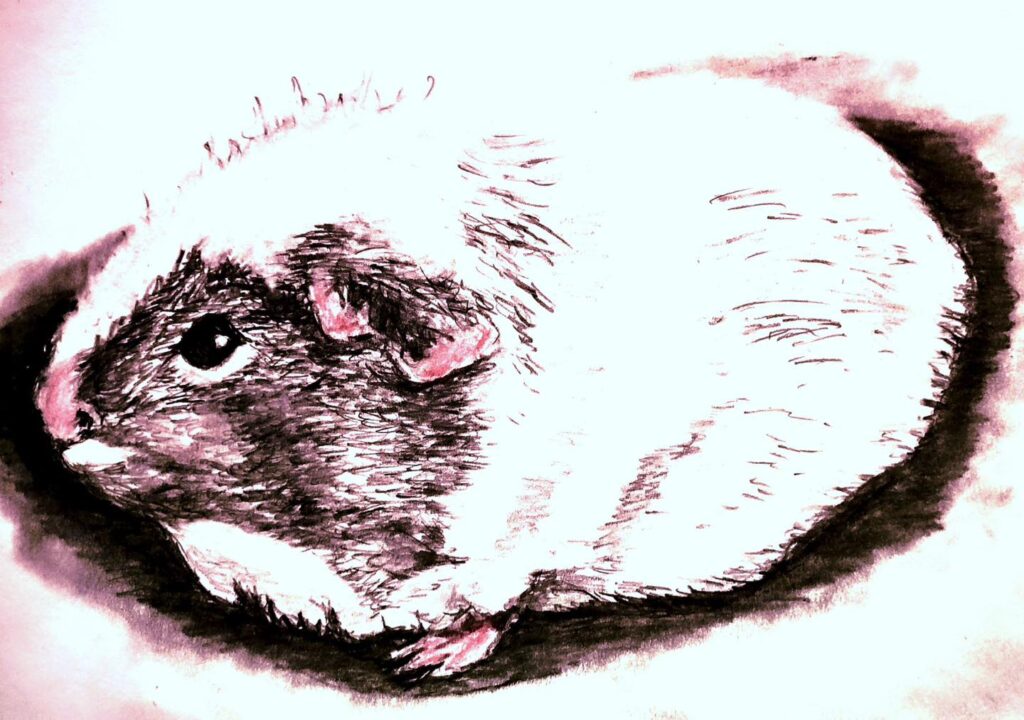
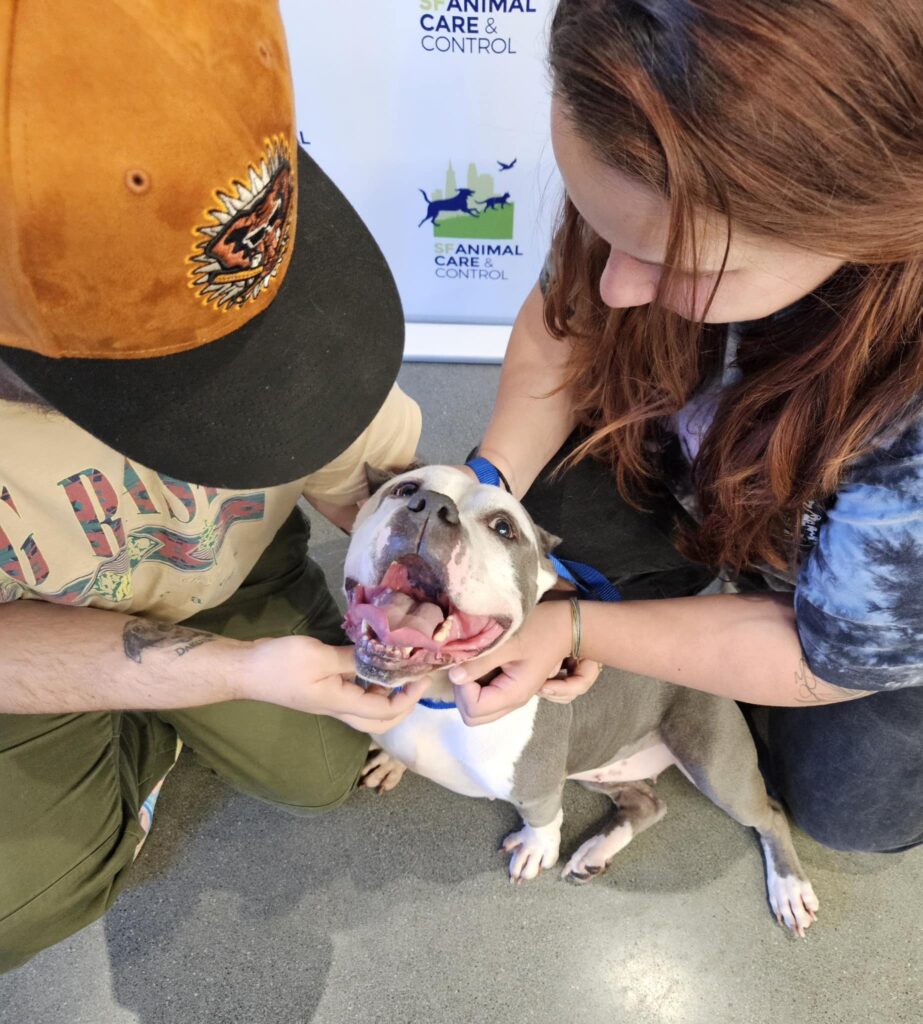
Polly Pocket
Two Tuxies Together


Twisp
“I found Arthur (A485910) exactly a year ago, dropped him off at SFACC, and eventually adopted him. We ended up calling him Luke. As you might remember, he had many health issues, including injuries on his hind legs, foxtails all over his body, and foxtails up his nose (as it turned out later). It was scary at the beginning to see if he would pull through, if he would get along with our other dog, and if we would be able to train him (he didn’t seem house-trained at all). But he has turned out truly amazing and we can’t imagine our life without him, he is an inspiration for me – how positive he was despite I can only imagine the pain and uncertainty he was going through. He put on 25 pounds since last year and won the second-best ears at SF Dogfest.
Thank you for doing what you do (special thanks to you, Anacani, for helping a bunch even after adoption) and caring for all the animals in need. We appreciate it very much. See you next year. Here are some pictures of Luke with his brother Rory.”
